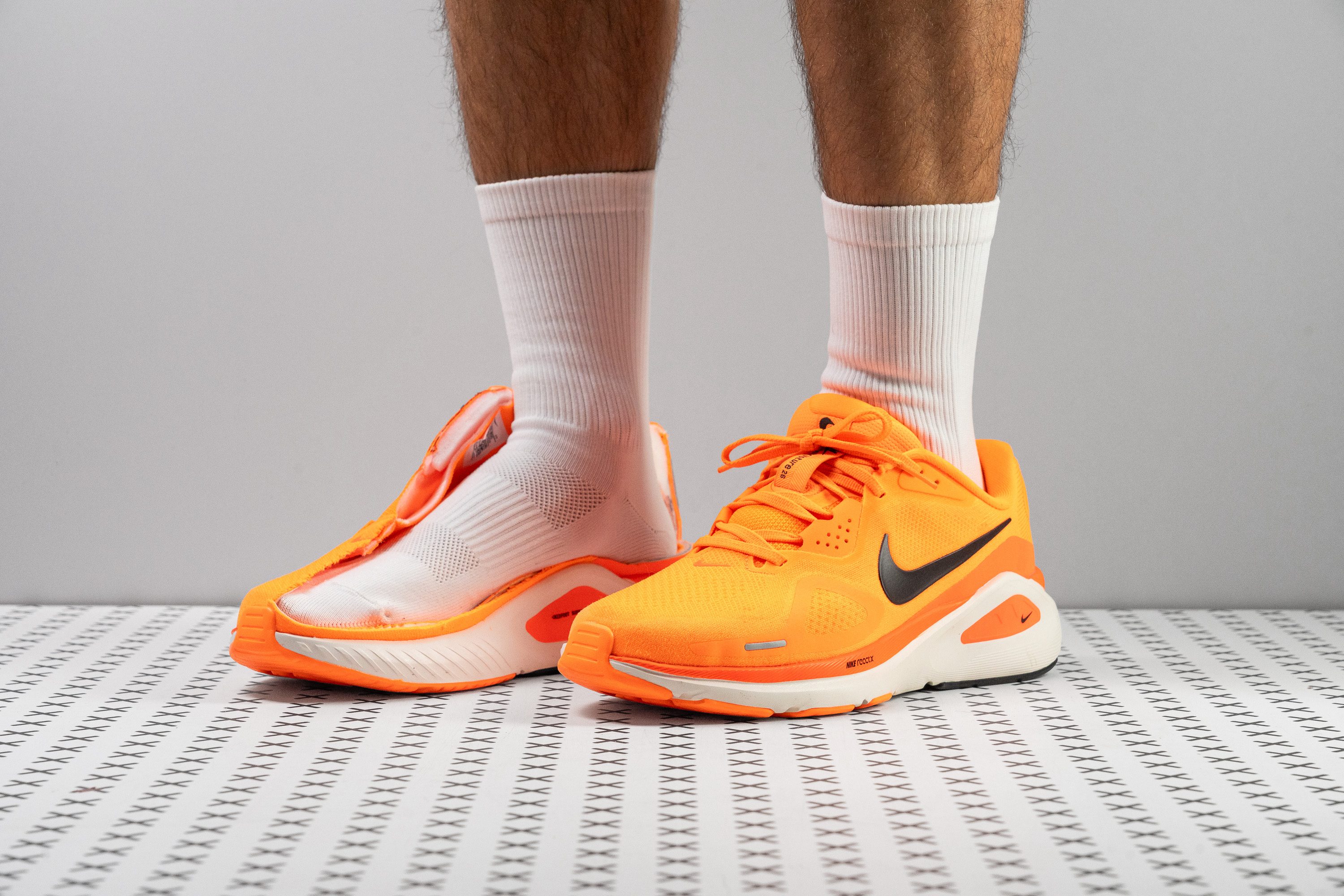Our verdict
- Top pick in best Nike running shoes
- Top pick in best Nike walking shoes
Pros
- ReactX foam upgrade
- Great choice for heel strikers
- Comfortable as a neutral daily trainer
- Outstanding durability
- Plush upper
- Solid stability in a compact build
- Versatile for everyday use
Cons
- Limited breathability
- Small price bump
- Not the best for forefoot strikers
- Reduced outsole coverage
Audience verdict
- Top 15% most popular running shoes
Comparison
The most similar running shoes compared
+ + Add a shoe | |||||
|---|---|---|---|---|---|
| Audience score | 84 Good! | N/A | 80 Good! | 85 Good! | |
| Price | $145 | $160 | $110 | $140 | |
| Pace | Daily running | Daily running | Daily running | Daily running | |
| Shock absorption | High | Moderate | Moderate | Moderate | |
| Energy return | Moderate | High | Low | Moderate | |
| Traction | Moderate | High | High | High | |
| Arch support | Stability | Stability | Stability | Stability | |
| Weight lab Weight brand | 10.4 oz / 296g 10.5 oz / 298g | 9.3 oz / 264g 9.5 oz / 269g | 9.6 oz / 272g 9.3 oz / 265g | 10.4 oz / 295g 10.5 oz / 298g | |
| Drop lab Drop brand | 10.1 mm 10.0 mm | 10.1 mm 8.0 mm | 9.6 mm 8.0 mm | 9.3 mm 8.0 mm | |
| Strike pattern | Heel | - | HeelMid/forefoot | HeelMid/forefoot | |
| Size | Slightly small | - | Slightly small | Slightly small | |
| Midsole softness | Soft | Soft | Soft | Soft | |
| Difference in midsole softness in cold | Small | Small | Normal | Big | |
| Toebox durability | Decent | Decent | Decent | Decent | |
| Heel padding durability | Good | Decent | Good | Bad | |
| Outsole durability | Good | Good | Good | Decent | |
| Breathability | Moderate | Warm | Warm | Moderate | |
| Width / fit | Medium | Narrow | Medium | Medium | |
| Toebox width | Medium | Narrow | Medium | Medium | |
| Stiffness | Moderate | Moderate | Moderate | Moderate | |
| Torsional rigidity | Stiff | Stiff | Stiff | Moderate | |
| Heel counter stiffness | Moderate | Stiff | Moderate | Stiff | |
| Heel lab Heel brand | 36.1 mm 38.0 mm | 36.8 mm 33.0 mm | 35.4 mm 34.5 mm | 36.8 mm 38.0 mm | |
| Forefoot lab Forefoot brand | 26.0 mm 28.0 mm | 26.7 mm 25.0 mm | 25.8 mm 26.5 mm | 27.5 mm 30.0 mm | |
| Widths available | NormalWideX-Wide | Normal | NormalWideX-Wide | NarrowNormalWideX-Wide | |
| Orthotic friendly | ✓ | ✗ | ✓ | ✓ | |
| Season | All seasons | - | All seasons | All seasons | |
| Removable insole | ✓ | ✗ | ✓ | ✓ | |
| Ranking | #247 Bottom 33% | #199 Bottom 46% | #306 Bottom 17% | #215 Bottom 42% | |
| Popularity | #52 Top 15% | #139 Top 38% | #153 Top 42% | #32 Top 9% |
Who should buy
We think the ideal buyers for the Nike Structure 26 are:
- Runners who enjoyed the Structure 25 but felt it was outdated—this update brings a fresh look, new ReactX foam and excellent durability.
- Those who prefer a classic stability shoe with a flat-style rocker and moderate stack height.
- Pegasus fans who want just a bit more support.
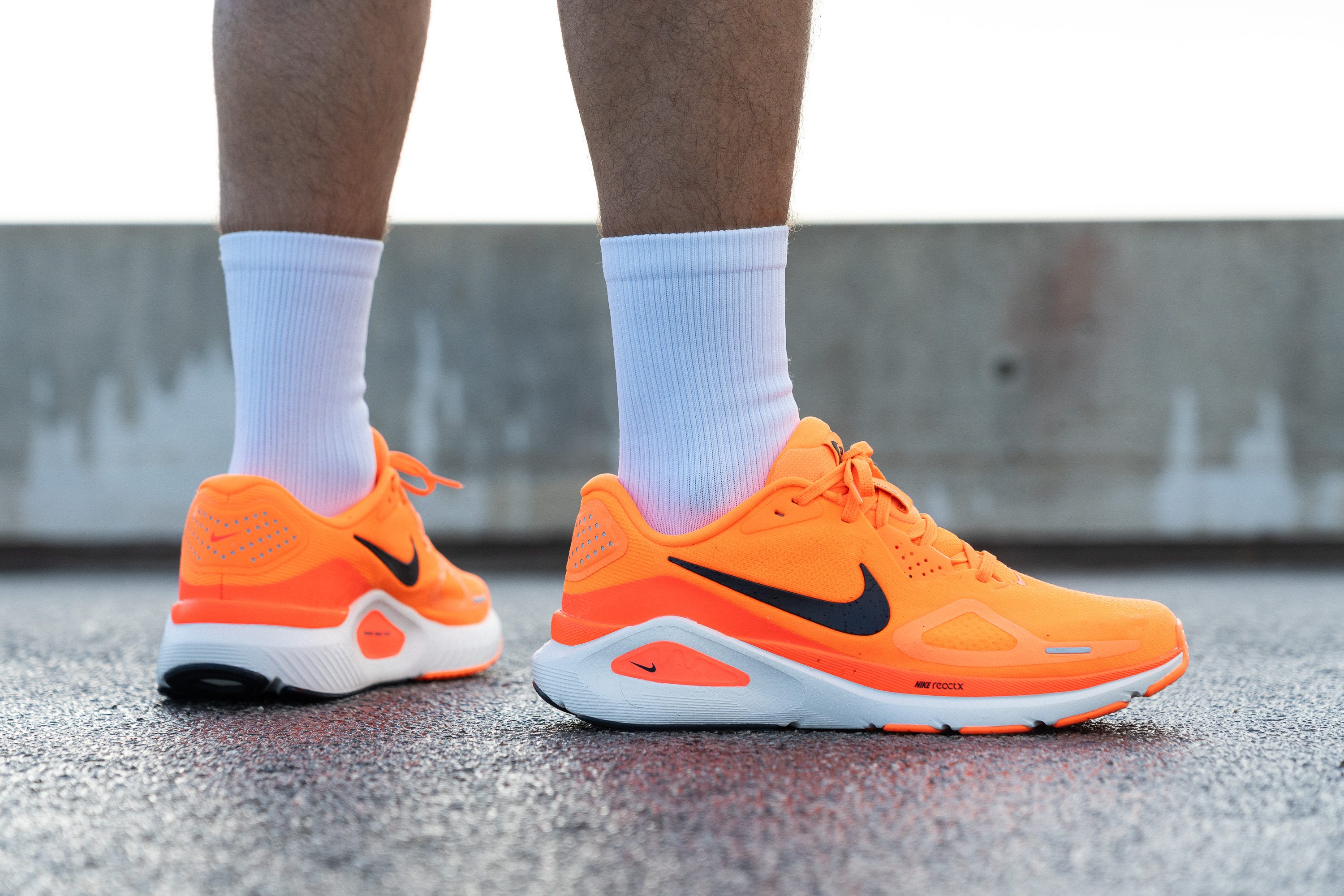
Who should NOT buy
We believe the Nike Structure 26 is not the best choice if weight is a concern. At 10.4 oz (296g), it feels bulky compared to today’s lighter stability trainers. In our view, models like the ASICS GT 2000 13 or HOKA Arahi 8 offer a more lightweight experience without giving up stability and shock absorption.
Additionally, we think forefoot strikers won’t find enough cushioning here, especially for long runs. We measured lower-than-average shock absorption in the front, which limits comfort over distance. For those landing up front, the ASICS Gel Kayano 32 is a better long-distance alternative.
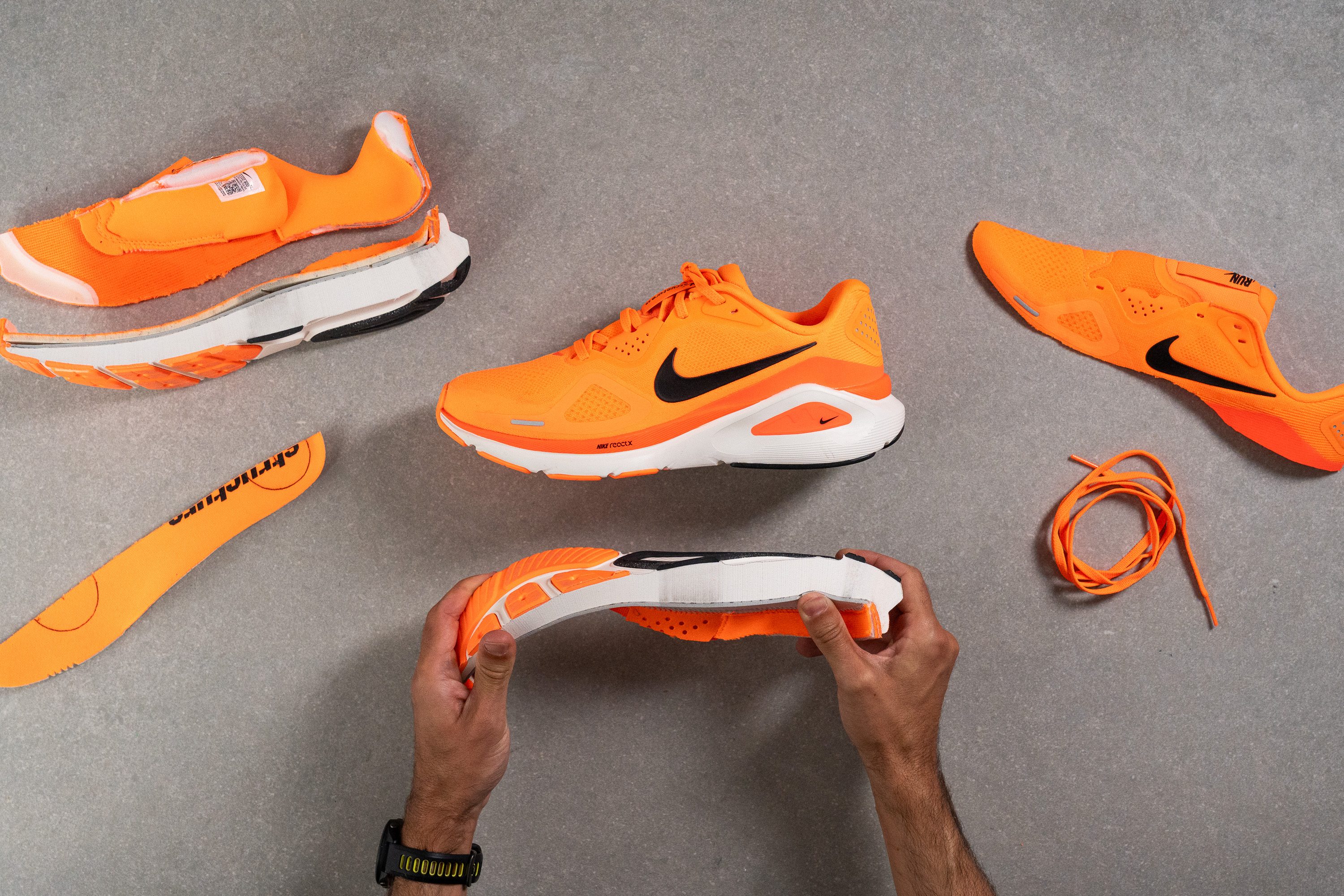
Cushioning
Shock absorption
The Structure 26 offers a noticeably different experience depending on foot strike. Heel shock absorption is strong at 132 SA, enough even for long runs, but the 99 SA measured in the forefoot may feel lacking for extended distances.
For short to medium runs—up to about 1.5 hours or so—the cushioning should be sufficient for everyone.
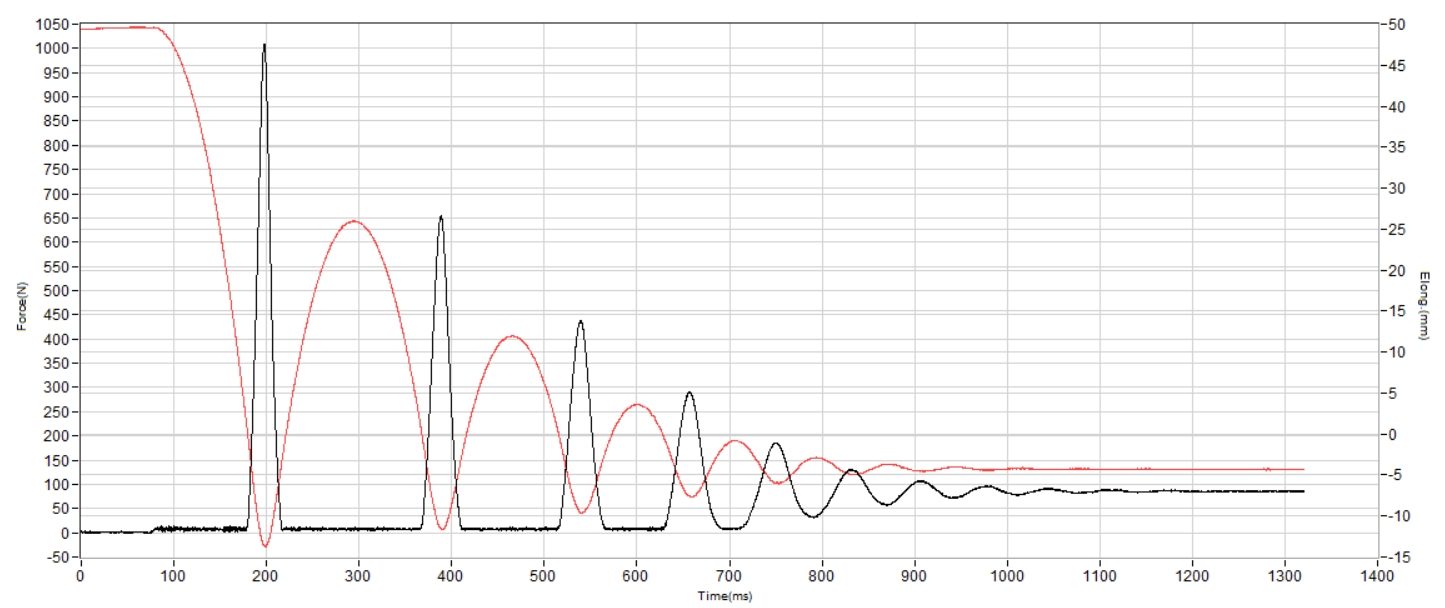
| Structure 26 | 132 SA |
| Average | 129 SA |
Energy return
The switch from Cushlon 3.0 to ReactX in the Structure 26 is a sweet upgrade. While ReactX isn’t the most advanced foam in the market, it’s better than Cushlon 3.0 and offers slightly improved energy return. We measured 57.2% in the heel and 59.4% in the forefoot, dependable figures for a daily trainer.
| Structure 26 | 57.2% |
| Average | 58.5% |
Heel stack
The Nike Structure series has never been a max-stack shoe, and we’re glad Nike hasn’t followed that trend.
While a stable and maximalist option from Nike could be interesting, we believe the market still needs shoes with reasonable stack heights for versatile use. The 36.1 mm we measured in the heel of this model hits a comfortable sweet spot.
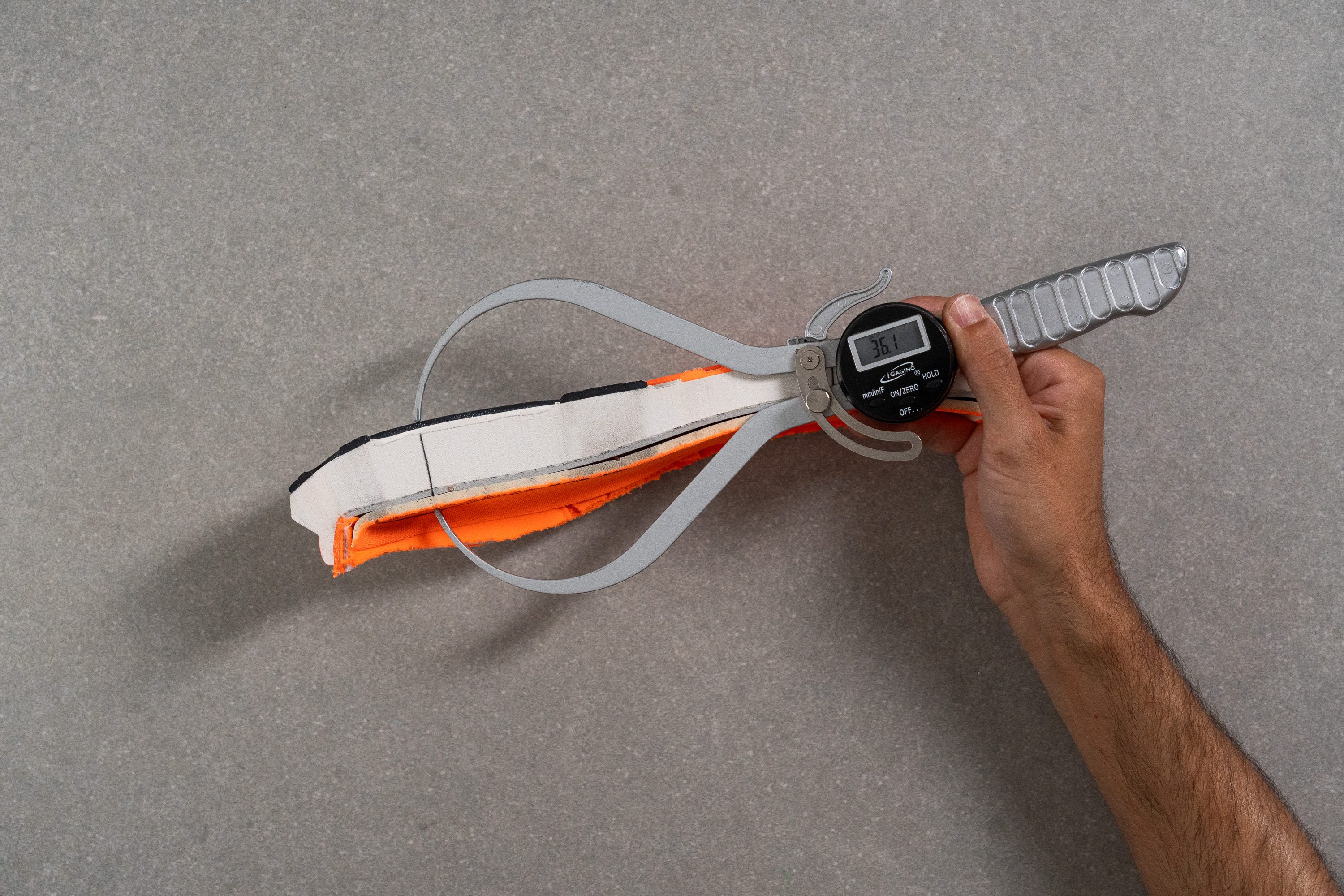
| Structure 26 | 36.1 mm |
| Average | 34.8 mm |
Forefoot stack
The forefoot stack follows the same approach as the heel, measuring 26.0 mm in height.
This is very close to our current lab average, though we expect that within a year or two it will likely sit at least 2 or 3 mm below these evolving standards.
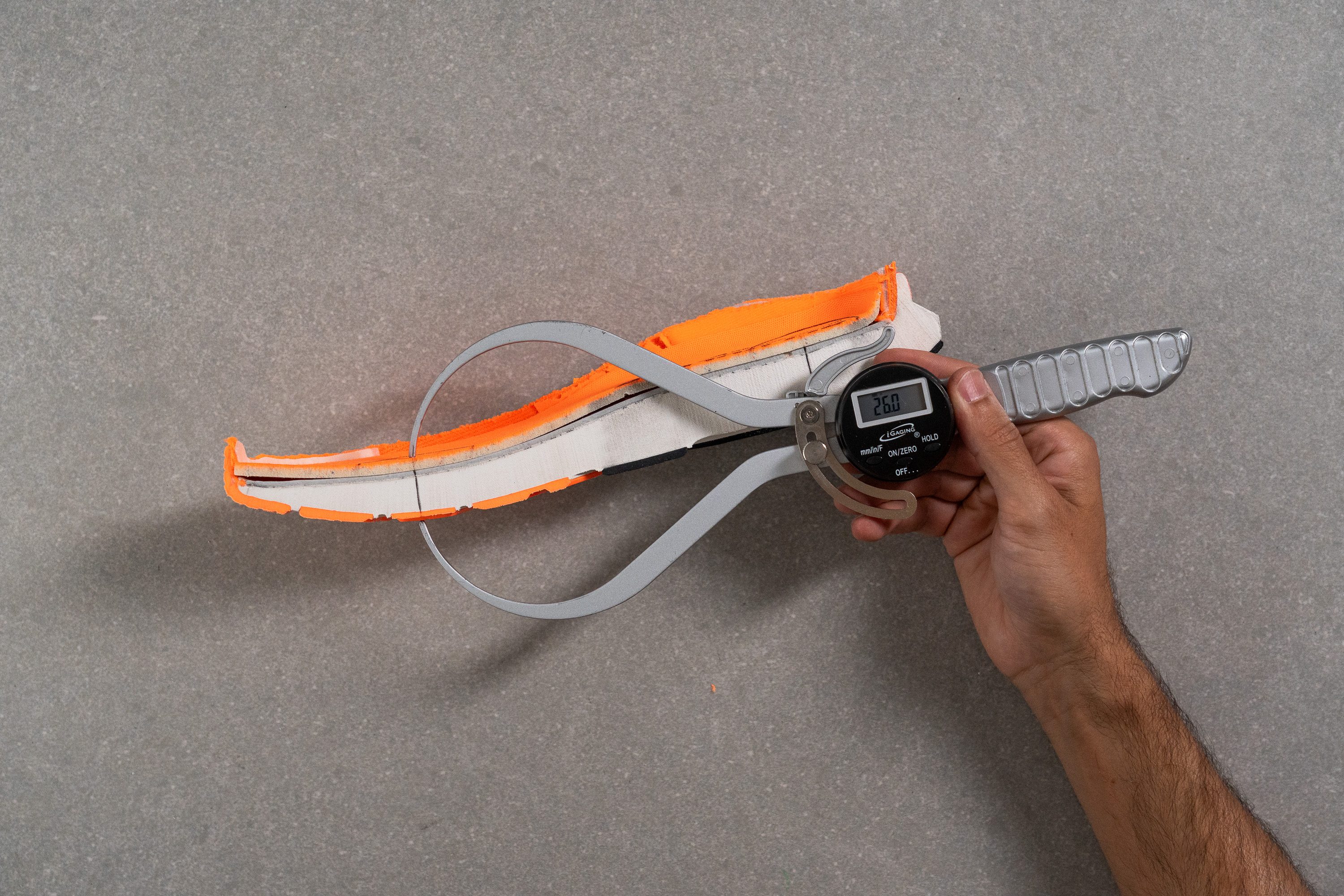
| Structure 26 | 26.0 mm |
| Average | 26.2 mm |
Drop
As with most Nike daily trainers, the Structure 26 lists a 10 mm drop. In our lab, we measured 10.1 mm, an incredibly small variance compared to the differences we usually find.
This confirms Nike’s choice to stick with the “classic running shoe” formula: moderate stack height, a higher drop to suit heel strikers, and probably an emphasis on durability. Whether the last part holds true remains to be seen...
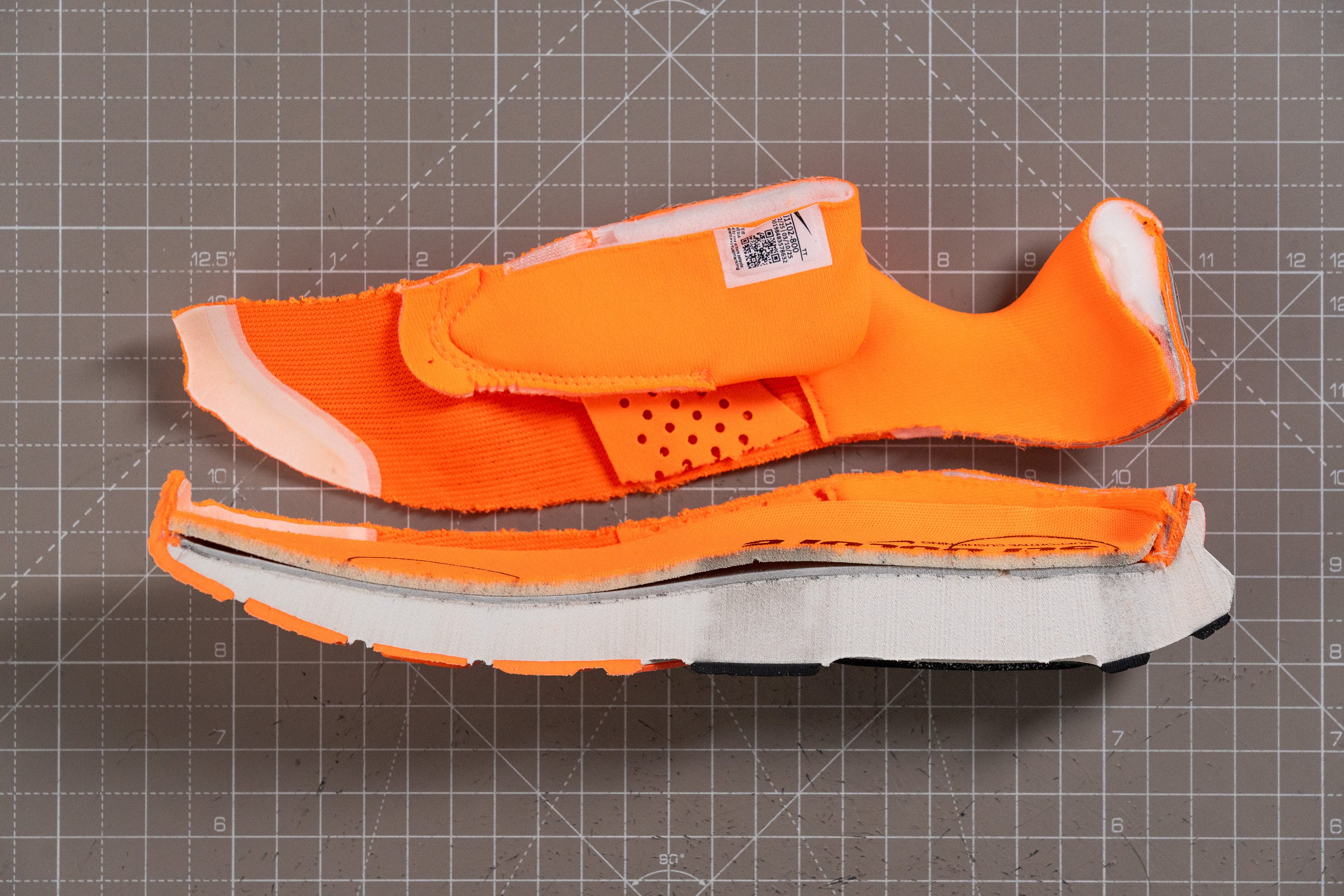
| Structure 26 | 10.1 mm |
| Average | 8.6 mm |
Midsole softness
The switch from Cushlon 3.0 to ReactX improves energy return and shock absorption, but the underfoot feel remains quite similar. The foam measured 16.9 HA in our lab, placing it between the plush and average ranges.
From our perspective, going softer wouldn’t make sense for a stability shoe, so this feels like a sensible choice.
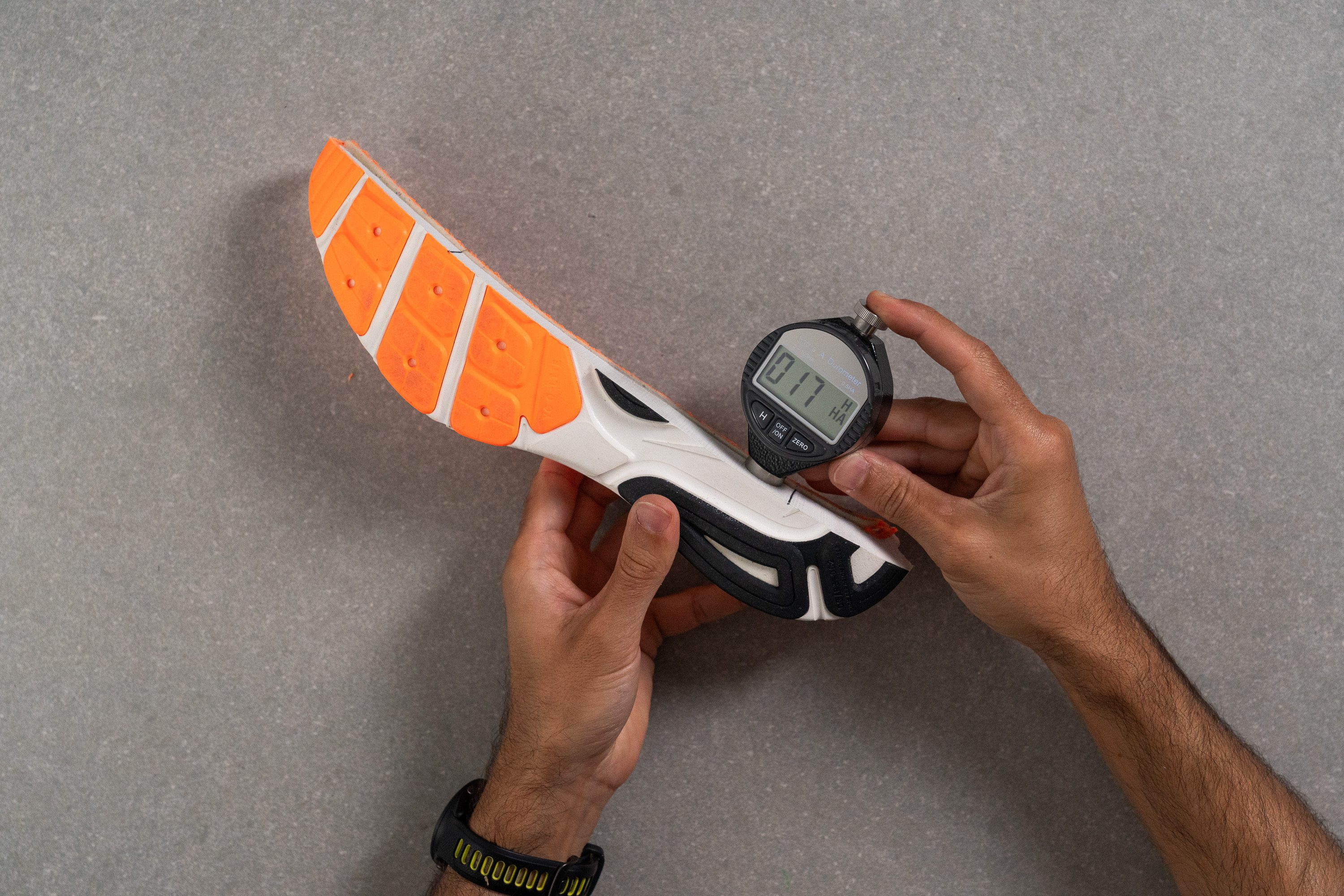
| Structure 26 | 16.9 HA |
| Average | 20.4 HA |
Rocker
The rocker of the Nike Structure 26 looks very classic, sticking to a traditional running shoe profile rather than the exaggerated curves we see in many modern designs.
The heel bevel is mild, while the forefoot shows minimal curvature. Instead of a highly rockered shape, it keeps a flatter geometry that gives a more natural, grounded transition underfoot, and it feels just like you may expect from a regular Pegasus or the previous Structure.
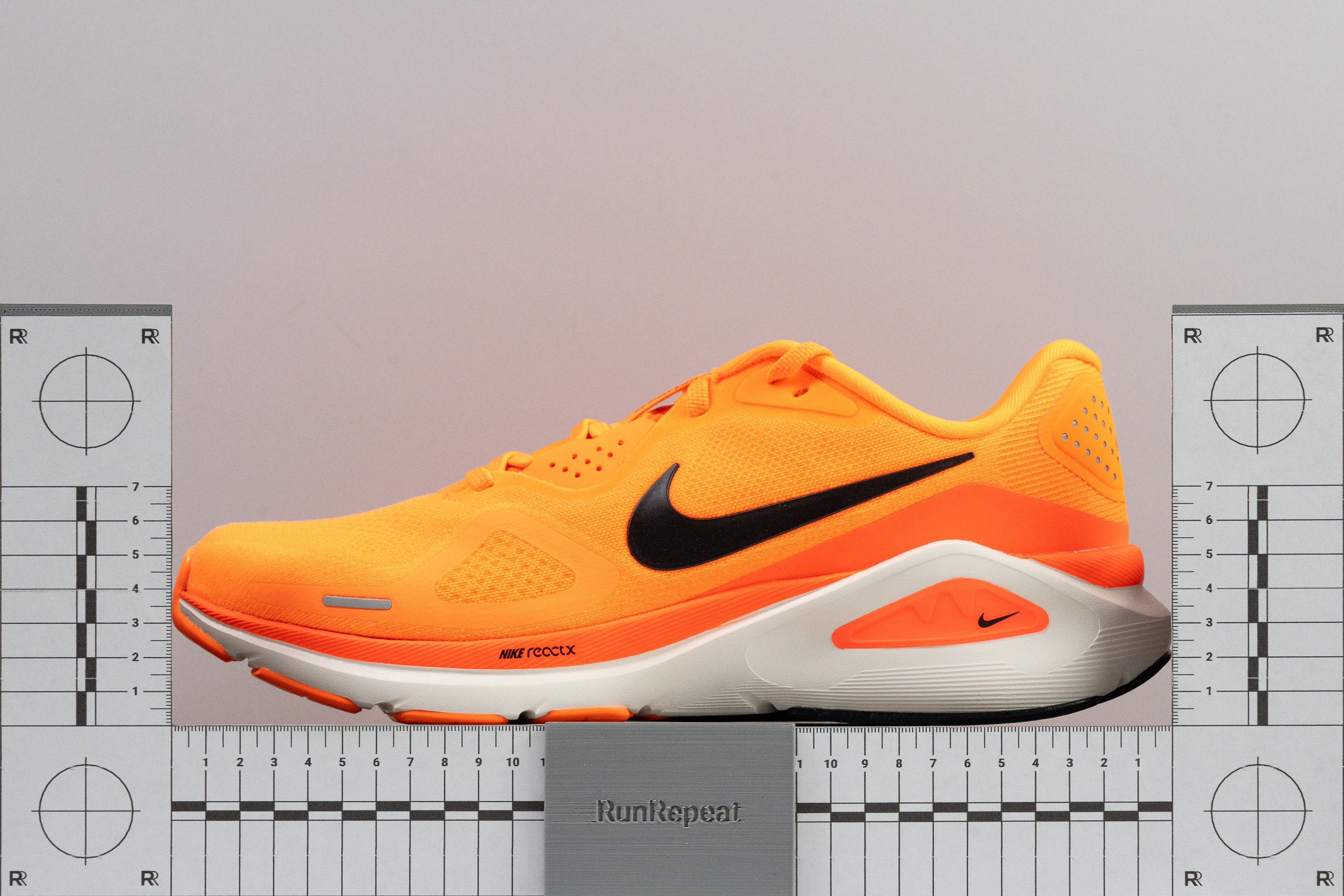
Size and fit
Size
Nike Structure 26 fits slightly small (79 votes).
Width / Fit
If you’re looking for a roomy running shoe, the Structure 26 won’t be the answer. That was clear from our first impressions, even before measuring. After testing hundreds of shoes, we’ve become quite skilled at spotting this quickly.
But we know that you’re here for lab data, not our guesses. Our first measurement showed 93.7 mm of width—already below the average.
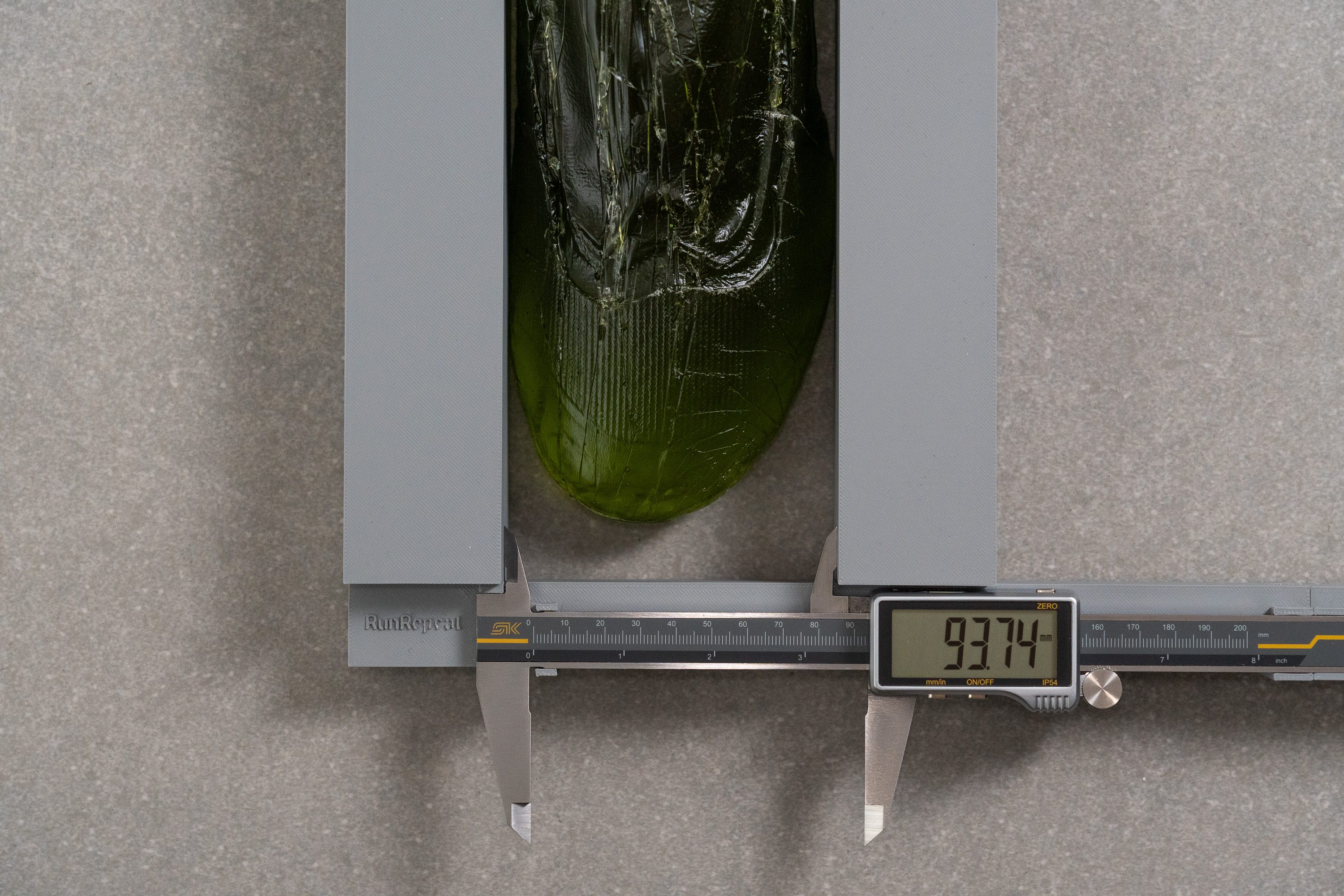
| Structure 26 | 93.7 mm |
| Average | 95.1 mm |
Toebox width
The second measurement is even more telling, taken in the toebox where your toes look for space to splay. In the Structure 26, the classic design continues with a pointed shape, coming in at just 71.9 mm.
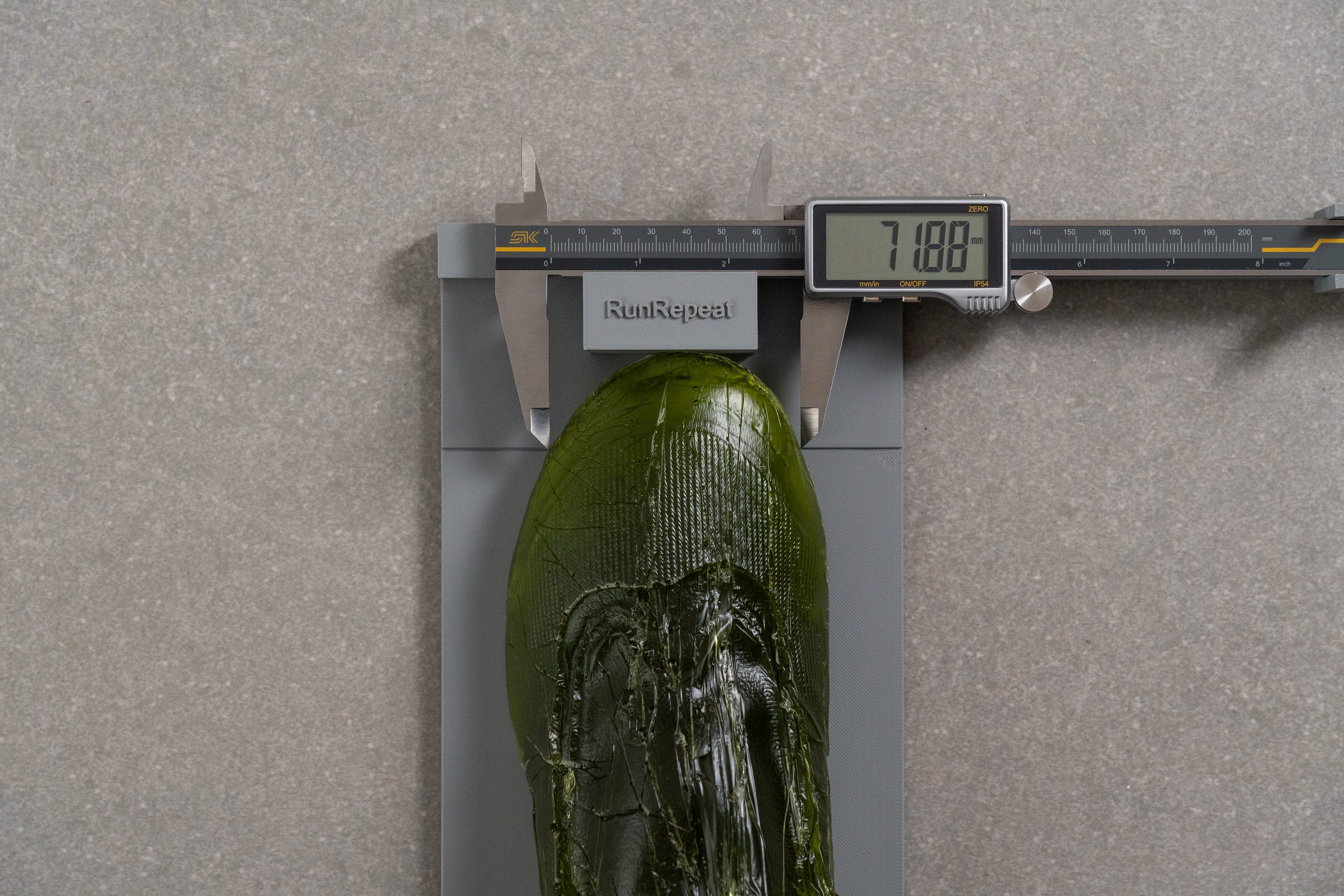
| Structure 26 | 71.9 mm |
| Average | 73.3 mm |
Toebox height
The toebox height adds a touch of snugness compared to other shoes you might own.
We measured 25.7 mm, which won't crush your toenails but does create a close fit that can enhance stability for some runners, but feel a bit oppresive for others.
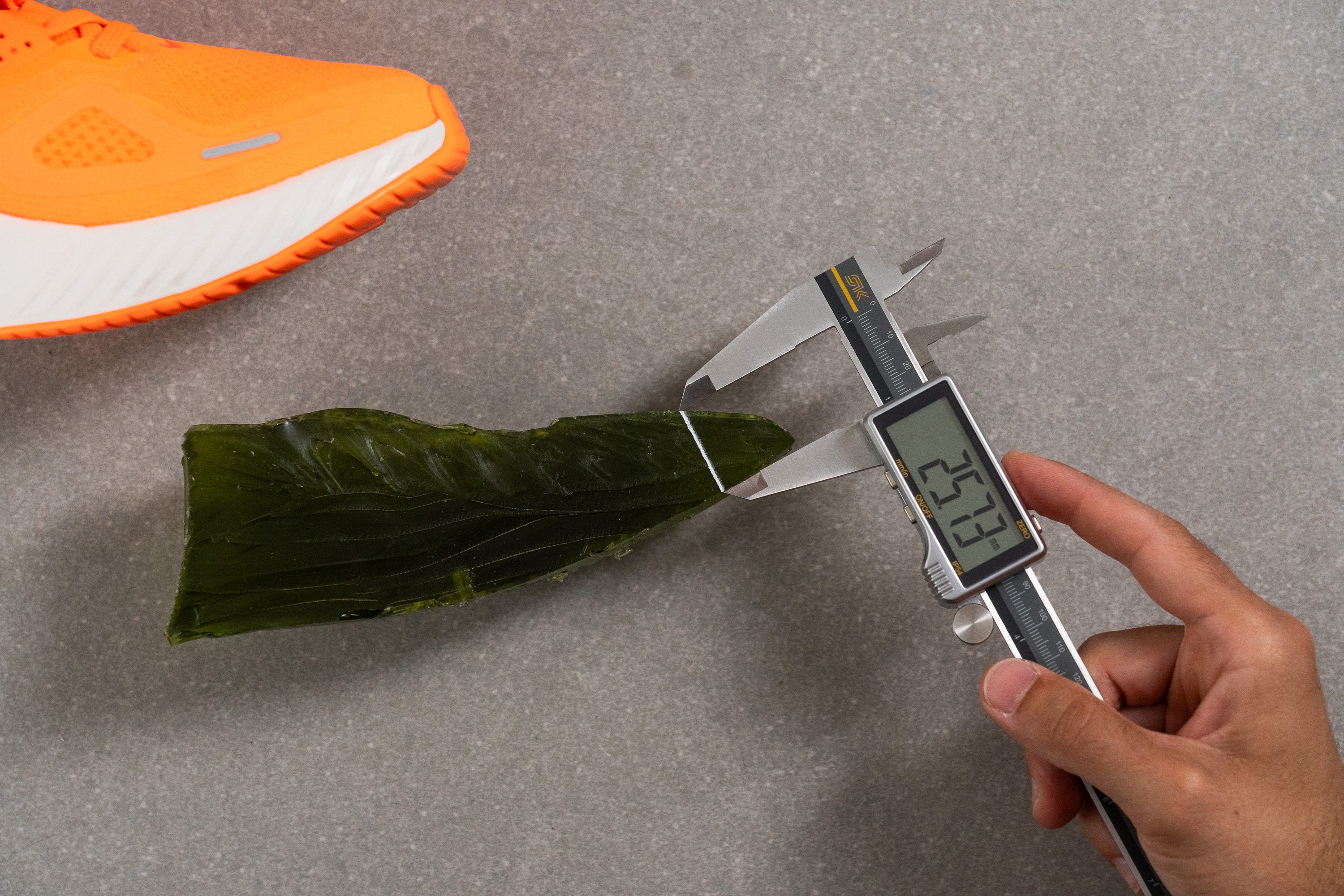
| Structure 26 | 25.7 mm |
| Average | 27.1 mm |
Traction / Grip
Traction test
Nike used a "High Abrasion Rubber" compound in the Structure 26, but the name doesn’t translate to outstanding grip.
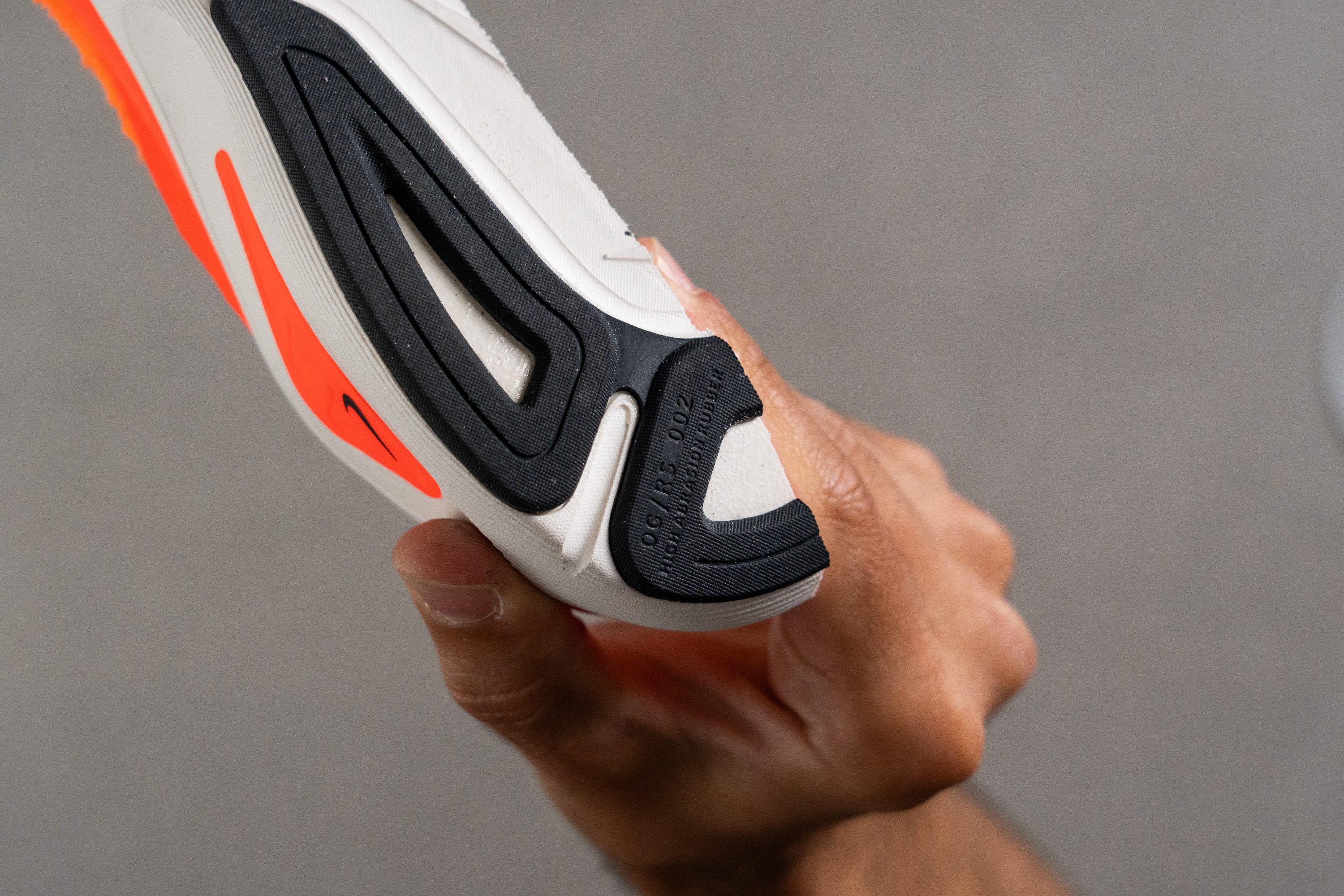
In our slip test on concrete, we measured 0.37, which is decent but lower than the average. On wet surfaces it may feel slightly slippery, likely a trade-off from reducing rubber coverage in the outsole.
| Structure 26 | 0.37 |
| Average | 0.48 |
Outsole design
Like we already mentioned, the outsole of the Nike Structure 26 has more exposed midsole foam than expected, helping to slightly reduce weight compared to its predecessor. However, this worries us a bit, as it’s definitely more exposed foam than any other Structure.
Black rubber protects high-impact zones in the heel and midfoot, while the forefoot features bright orange segmented pods with deep flex grooves that improve flexibility.
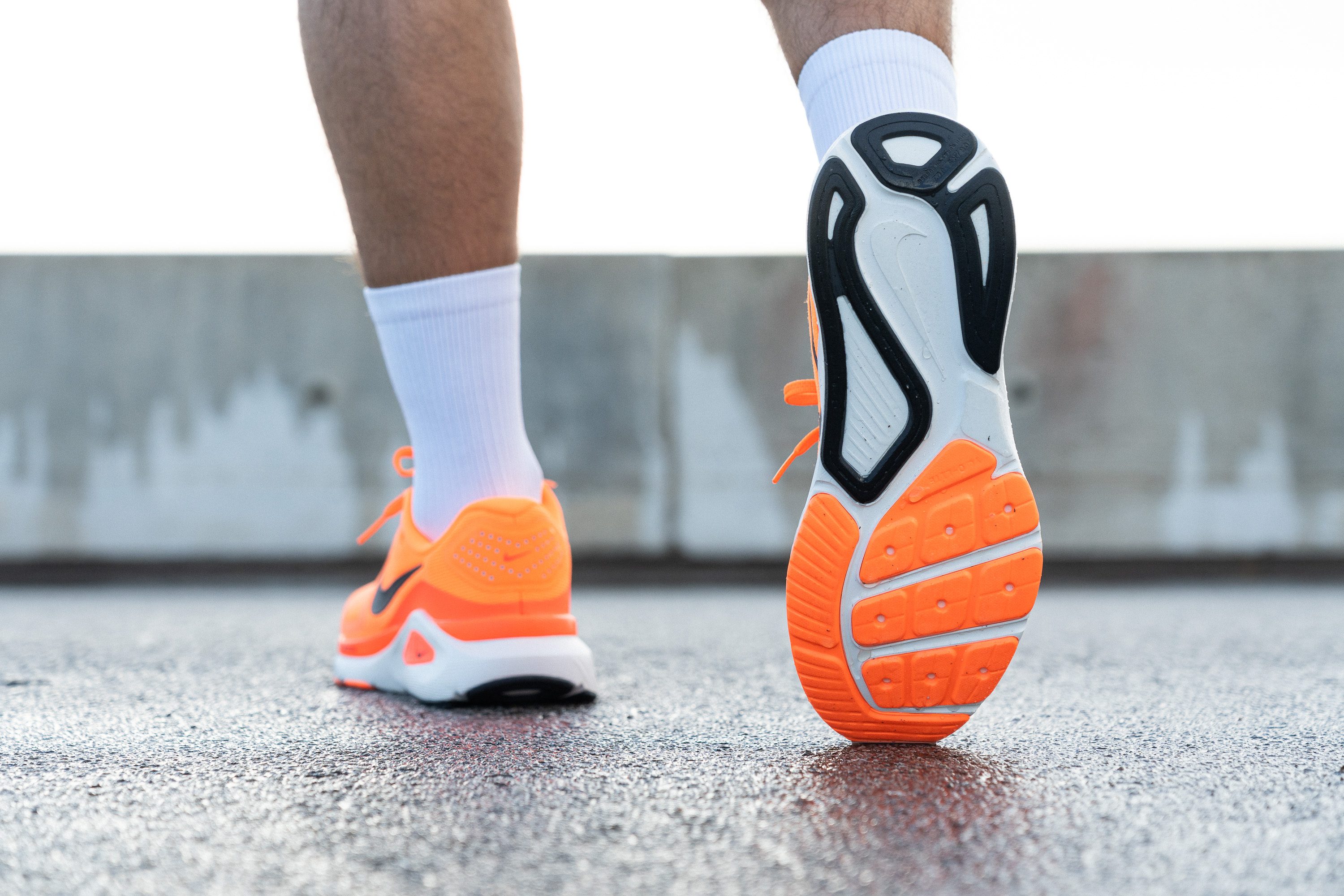
Flexibility / Stiffness
One interesting aspect of the Nike Structure 26 is that, despite being designed for stability, it still feels like a classic running shoe in many ways. Its rigidity is lower than other options at just 13.8N, making it a bit more comfortable for daily wear.
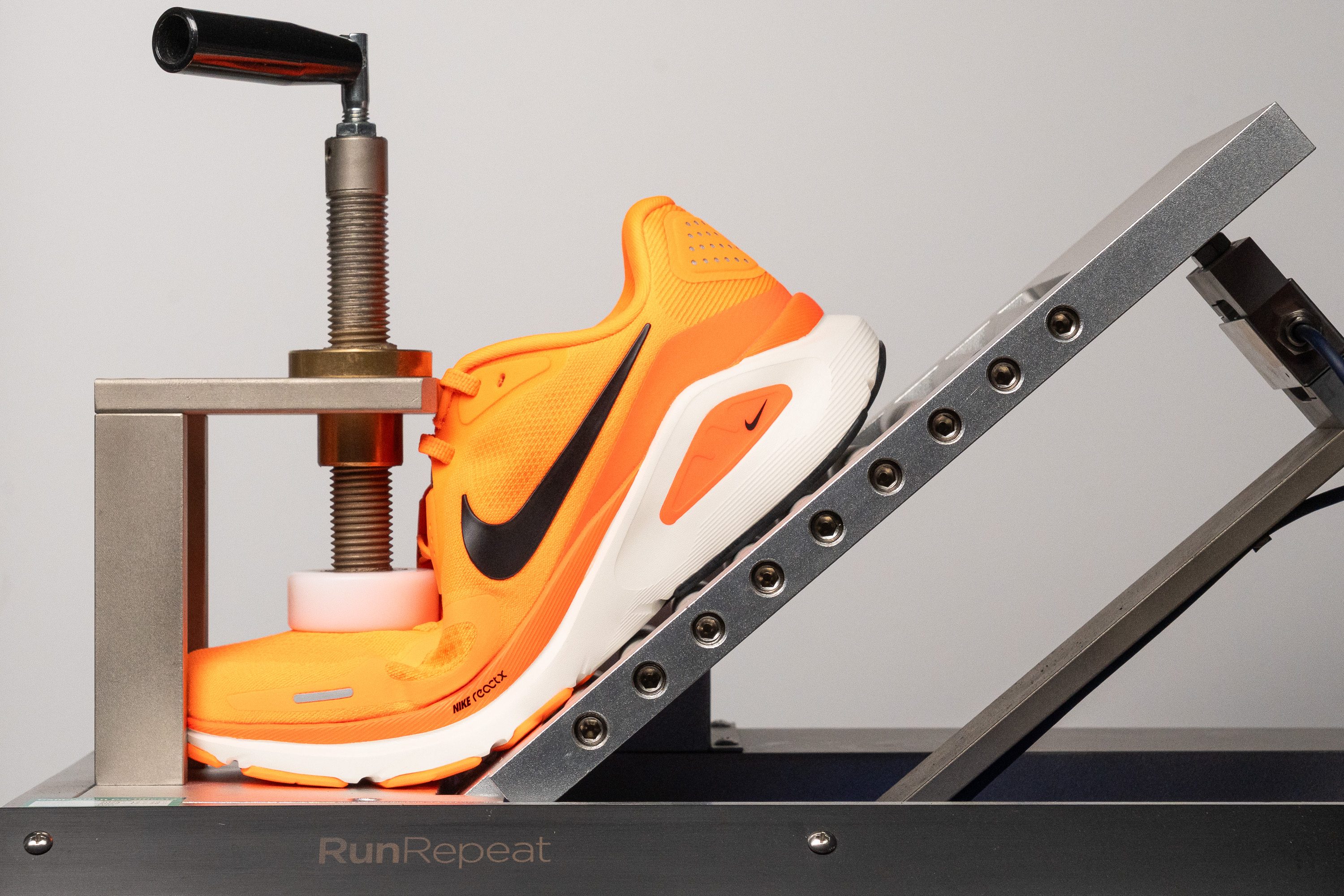
| Structure 26 | 13.8N |
| Average | 15.3N |
Weight
For us, the weakest point of the Nike Structure 26 is its heavy build. While 10.4 oz (296g) might have been acceptable some years ago, many brands now deliver much lighter options in this category.
If weight isn’t a concern because you prefer reliable stability and don’t focus on speed, this won’t bother you. But we tested it thoroughly, and if you dislike a heavy-underfoot feel, the Structure 26 might not suit you.
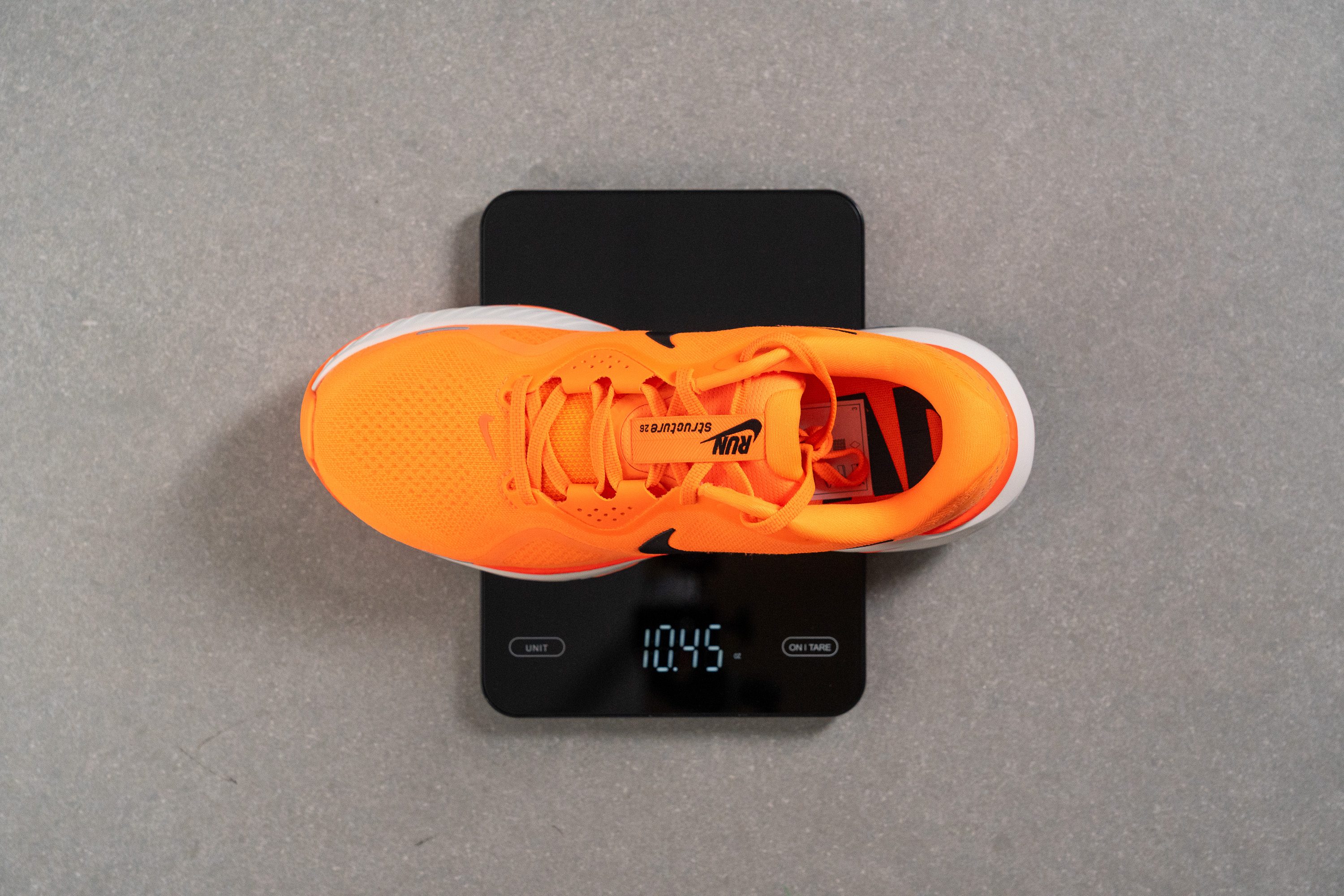
| Structure 26 | 10.4 oz (296g) |
| Average | 9.3 oz (264g) |
Breathability
The Structure 26 is, unsurprisingly, a shoe built with support as the main priority, with other features like weight and breathability taking a back seat.
In our smoke test, it scored a decent 3/5, which should be fine for most of the year unless you run in very hot places like Austin, Athens, or Córdoba... during summer.
Using our light test to examine ventilation holes, we saw only a few, and find out that the upper is definitely thick. The toebox includes some openings that help achieve this score, but don’t expect an airy, lightweight design.

Under our digital microscope, the upper revealed a dense engineered mesh with super-small ventilation holes that are barely visible, even under magnification.
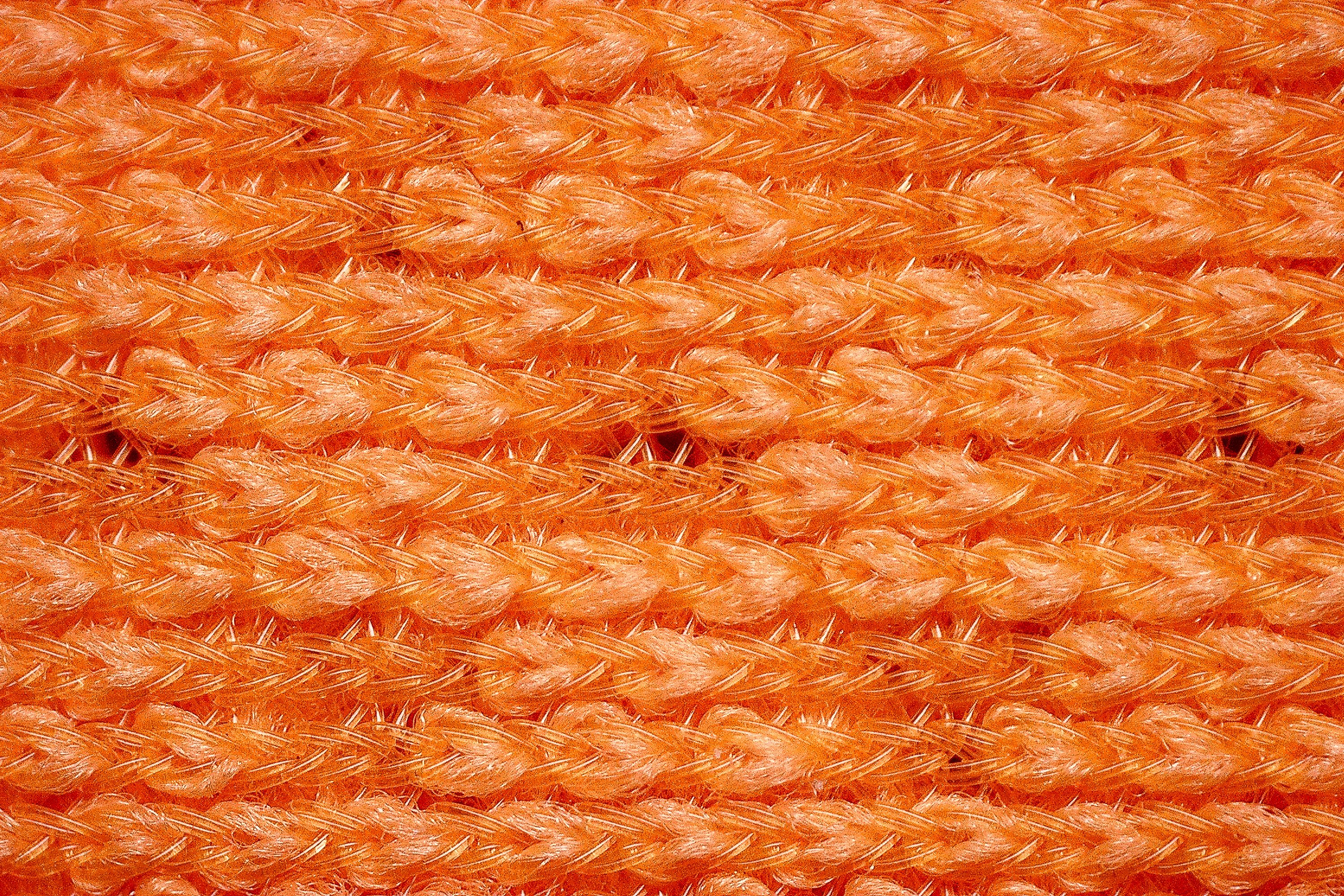
From our perspective, this no-nonsense setup matches the character of the Structure 26. Something has to give to improve stability and comfort, and in this case breathability is one of the main trade-offs.
| Structure 26 | 3 |
| Average | 3.7 |
Stability
Lateral stability test
The Midfoot Support System in the Structure 26 uses a sidewall design that wraps around the arch to stabilize both the midfoot and heel. It clearly doesn’t focus on forefoot strikers, but that's something we already noticed during this lab review.
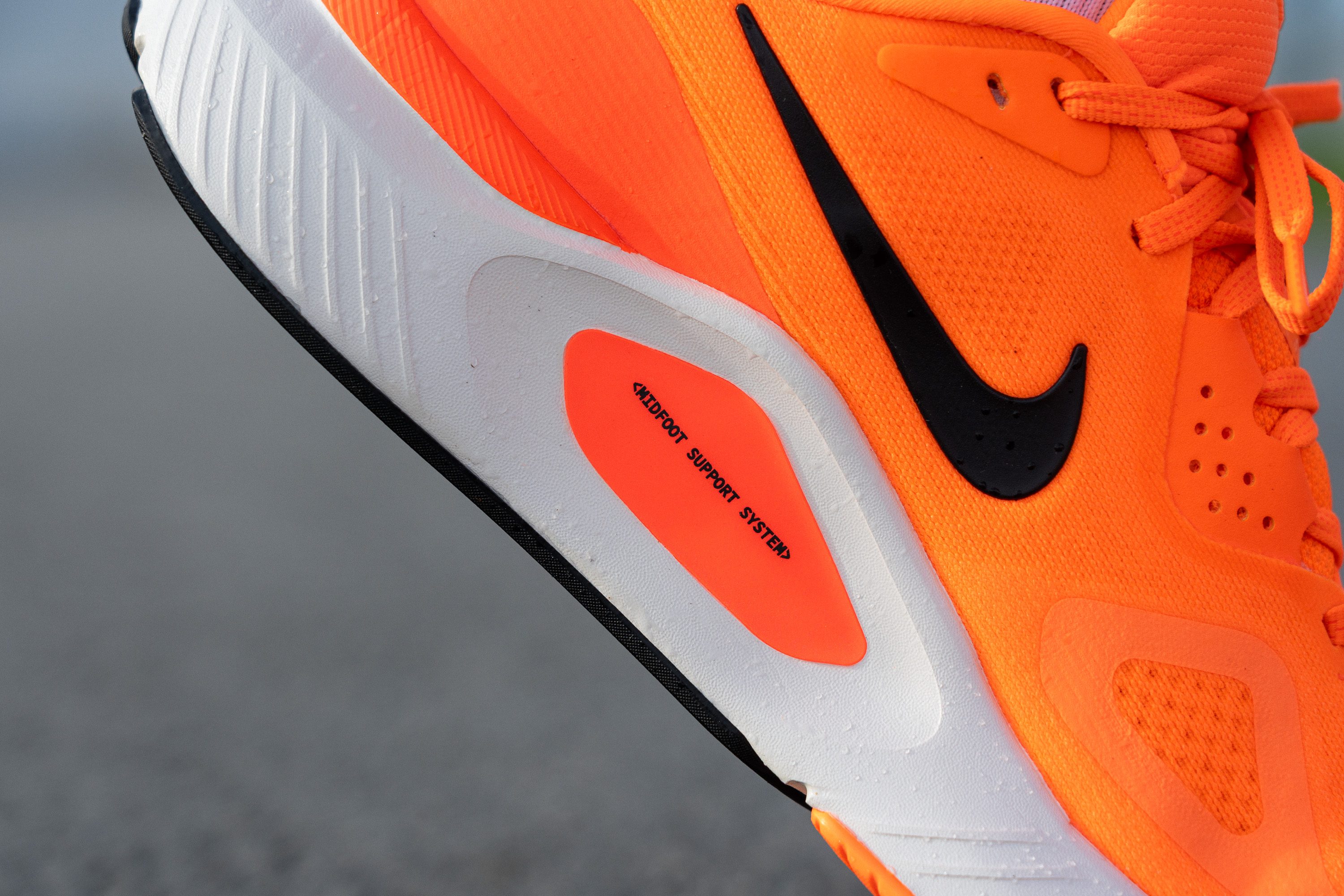
In our tests, the ride felt stable as a table, and we think runners who enjoy classic, old-school stability shoes will find it very familiar, almost like a traditional medial post.
Torsional rigidity
Thanks to the deep flex grooves in the outsole, the Structure 26 bends more than the average stability trainer, earning a 4/5. This reduces rigidity and gives the shoe a slightly more pleasant feel underfoot.
| Structure 26 | 4 |
| Average | 3.5 |
Heel counter stiffness
The heel counter of the Structure 26 feels softer and less intrusive than in past versions. In our lab tests, it scored 3/5, making it more comparable to a Pegasus than to earlier Structures.
| Structure 26 | 3 |
| Average | 2.9 |
Midsole width - forefoot
Want more classic design? Here it is. With 114.4 mm of forefoot width, the Structure 26 shows itself as a pure “daily trainer with stability” rather than a full stability shoe, as it's well below the 120 mm we often see in other brands’ models like the HOKA Gaviota 5.
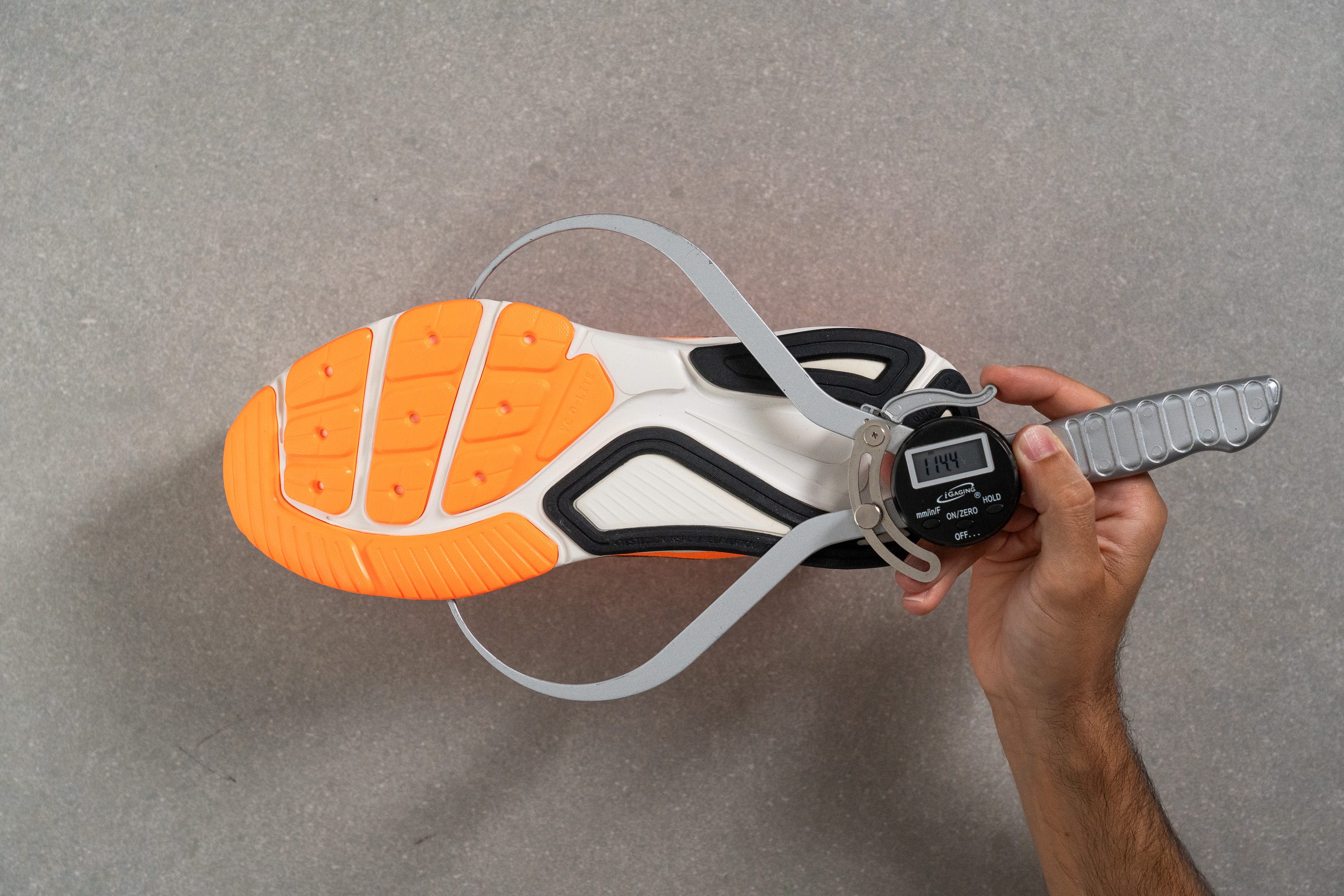
| Structure 26 | 114.4 mm |
| Average | 114.4 mm |
Midsole width - heel
The heel measured 92.4 mm, placing it very close to the average running shoe.
For context, the Pegasus 41 comes in at 89.2 mm. That's a super-small difference that highlights the Structure 26 as more of a neutral daily trainer with enhanced stability rather than a solution for severe stability needs.
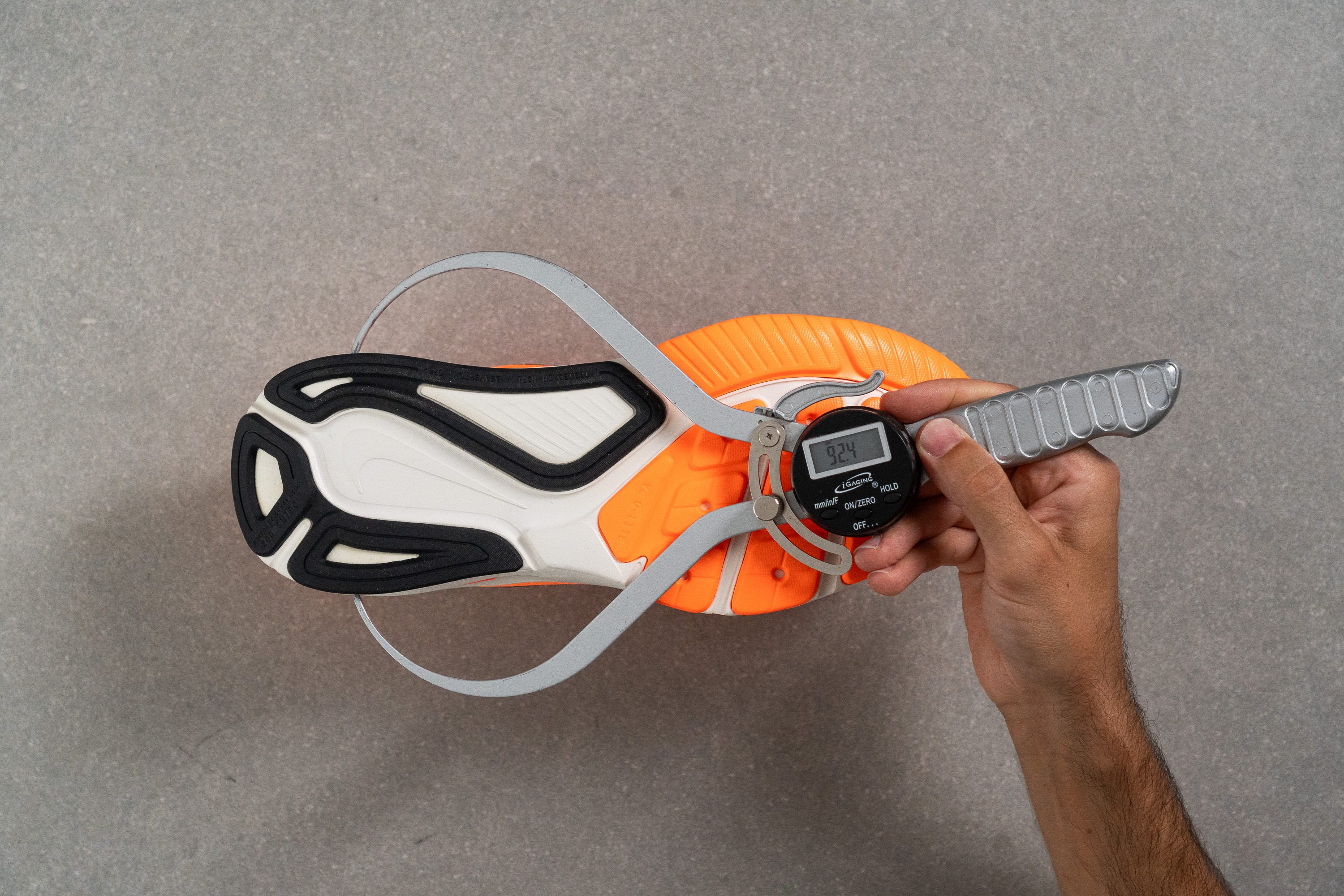
| Structure 26 | 92.4 mm |
| Average | 90.7 mm |
Durability
Toebox durability
With its small openings and dense upper, we expected the Structure 26 to hold up well in our first durability test. Our results confirmed this with a solid 3/5 score—good enough to pass, but not particularly remarkable, much like the rest of the shoe.
| Structure 26 | 3 |
| Average | 2.6 |
Heel padding durability
The heel padding also proved reliable, showing no signs of early wear. In our second Dremel test, it earned a strong 4/5 score, confirming its solid durability.
| Structure 26 | 4 |
| Average | 3.4 |
Outsole durability
We pushed the Dremel to 10K RPM with the same 2N of force to test the outsole, and the result was excellent. The rubber held up remarkably well, showing only 0.6 mm of damage, proving the Structure’s long-lasting build.
| Structure 26 | 0.6 mm |
| Average | 1.1 mm |
Outsole thickness
We measured 3.2 mm of outsole thickness, which feels like a safe choice. However, based on the strong Dremel results, Nike could consider trimming it slightly in the next version to make the shoe lighter.
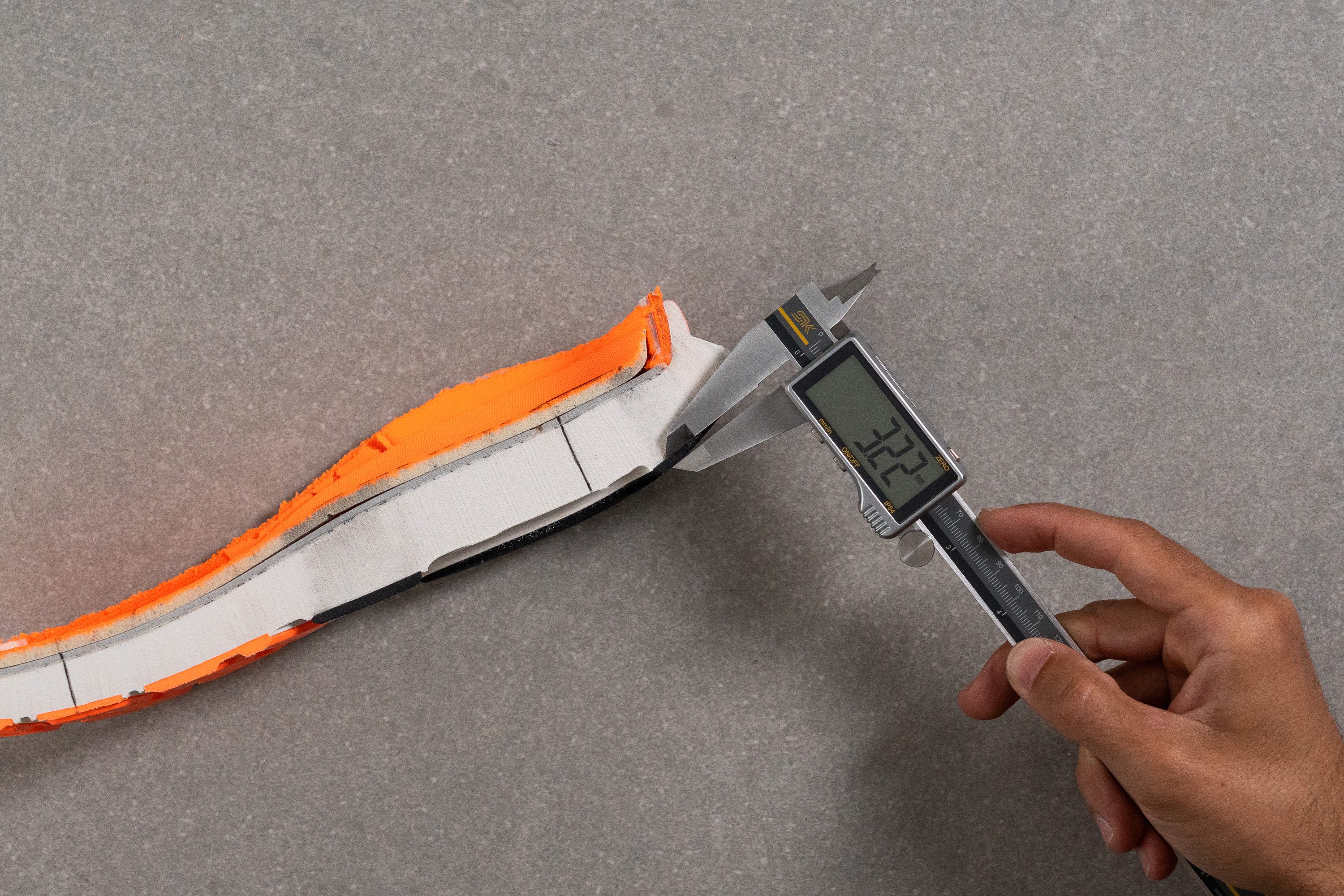
| Structure 26 | 3.2 mm |
| Average | 3.2 mm |
Misc
Insole thickness
The insole measures slightly thinner than average at 3.9 mm, though this small difference is hardly noticeable underfoot.
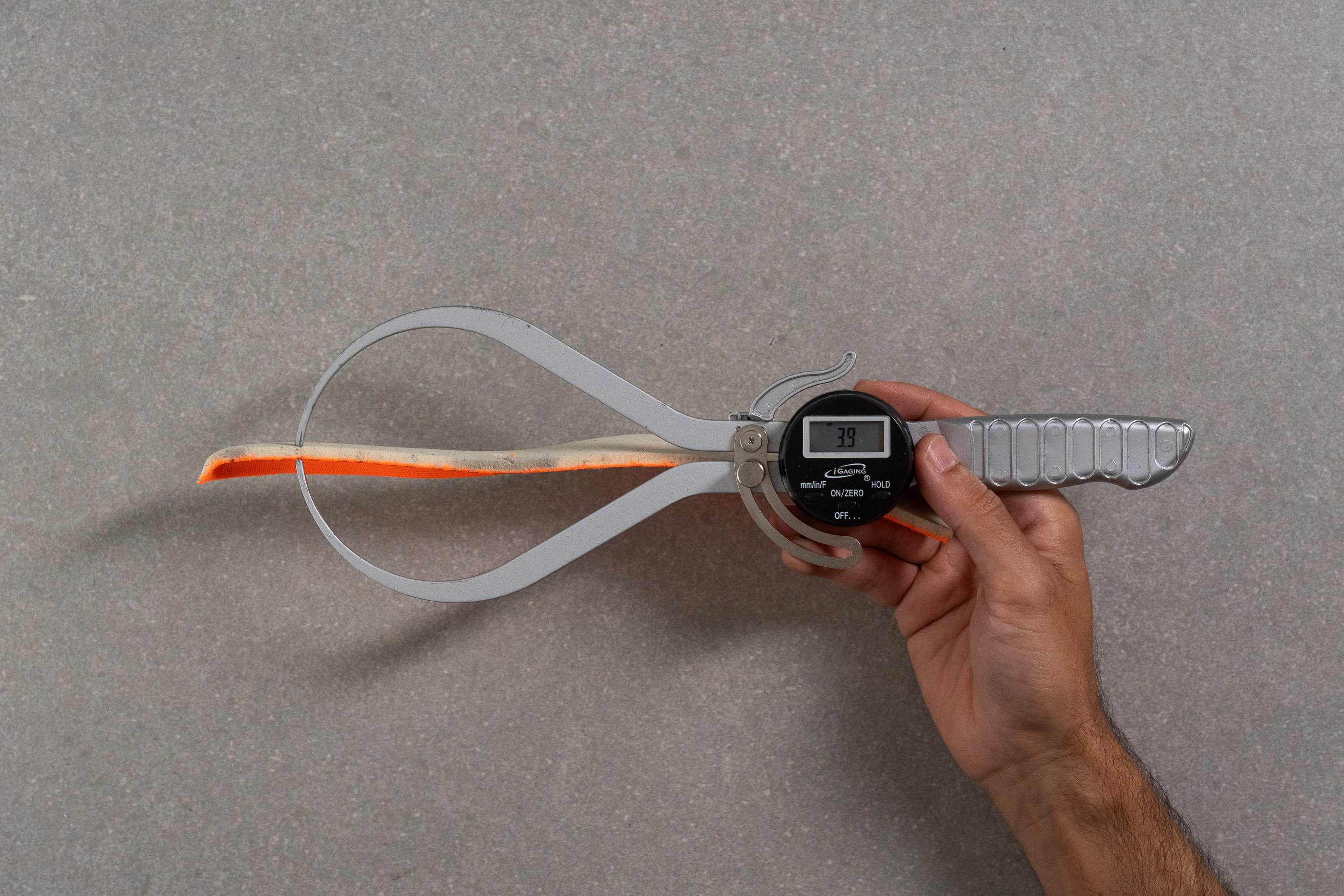
| Structure 26 | 3.9 mm |
| Average | 4.5 mm |
Removable insole
We found that the insole is removable and, as with many stability shoes, slightly flared to help keep the foot centered. It also clearly indicates the type of running this shoe is designed for, leaving no room for doubt.
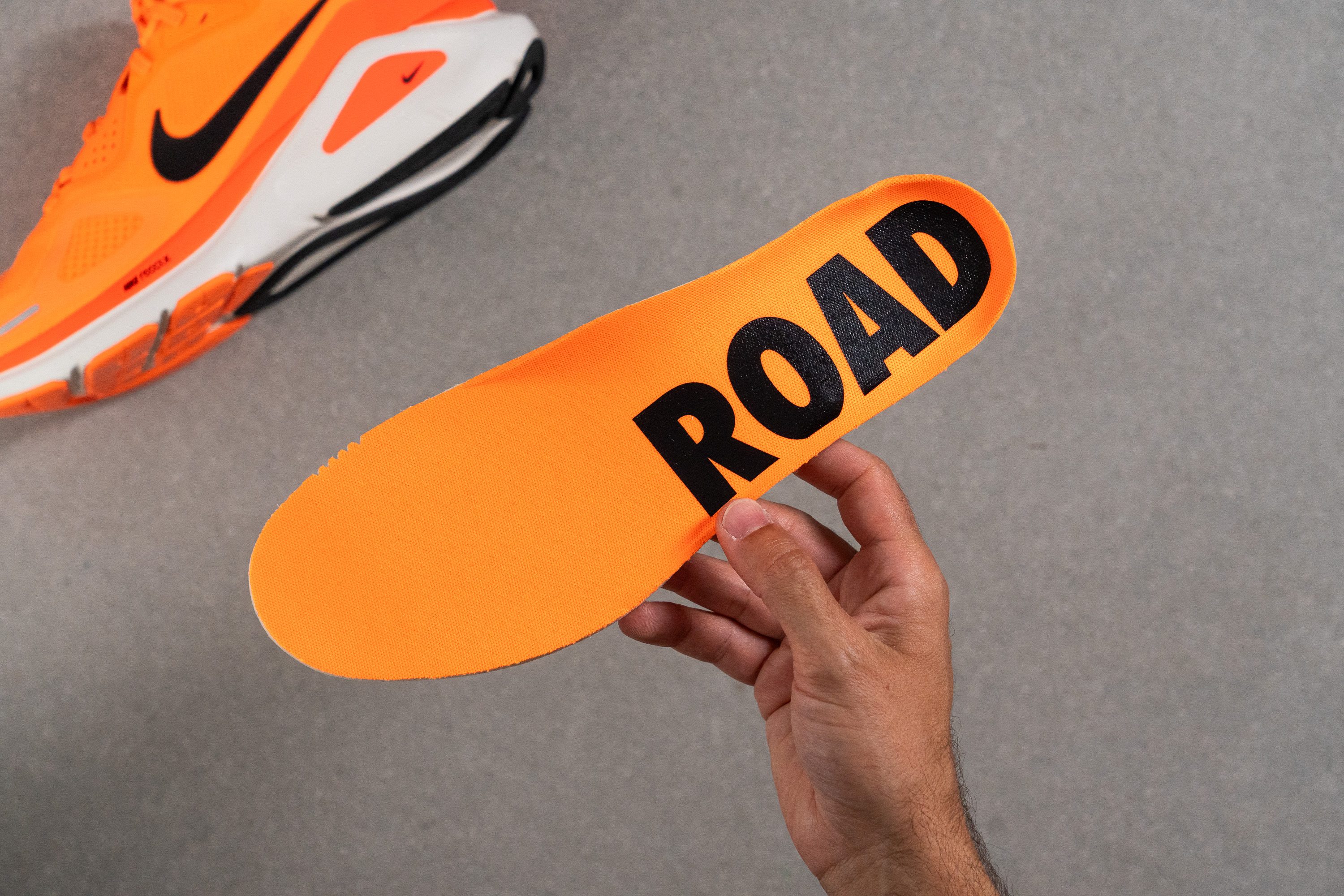
| Structure 26 | Yes |
Midsole softness in cold (%)
ReactX handles cold slightly better than EVA, though it falls short of the excellent performance we often see in Pebax foams. In our test, we measured a 25% increase in firmness after 20 minutes in the freezer.
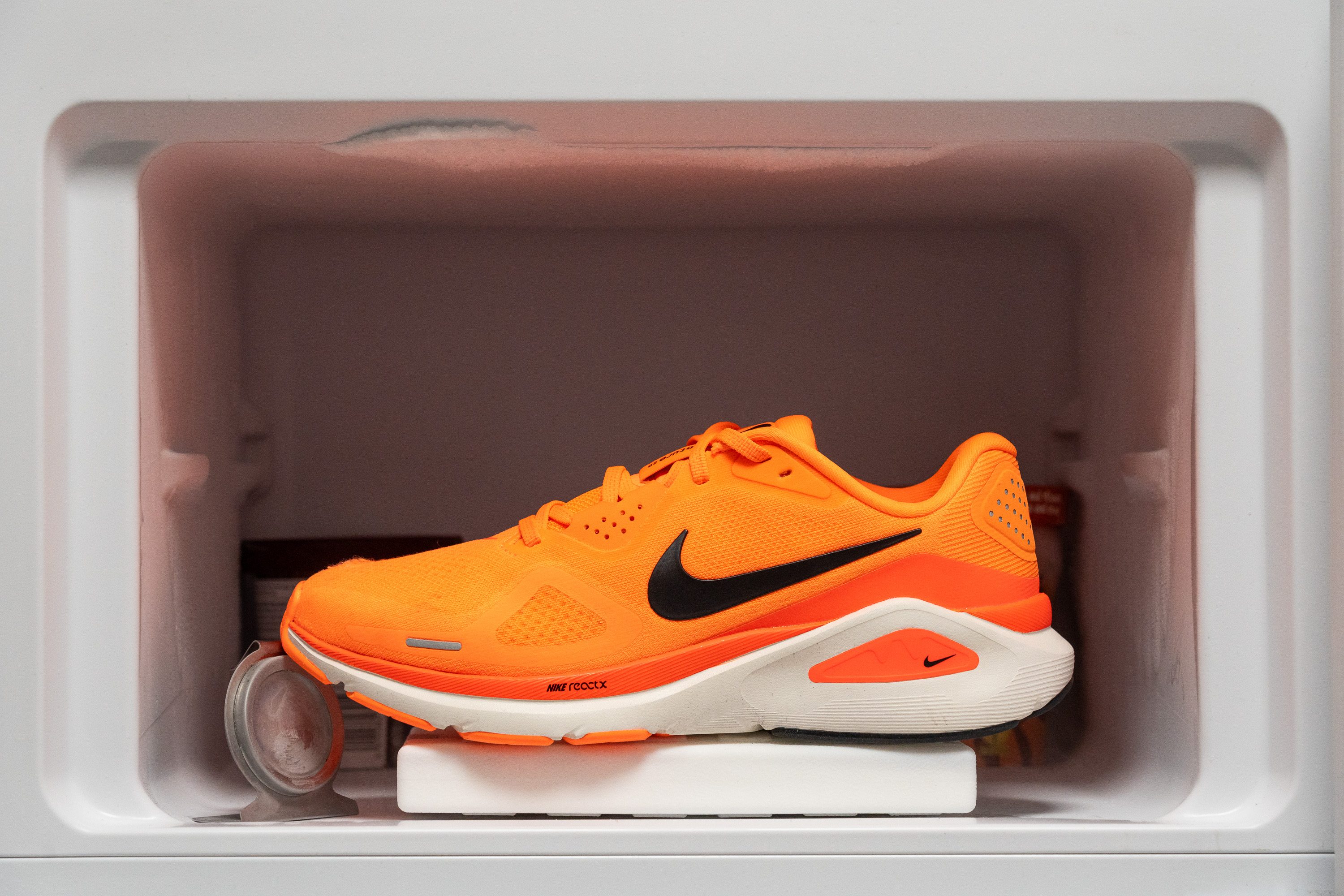
| Structure 26 | 25% |
| Average | 24% |
Reflective elements
We found some reflective elements on the Structure 26. They aren’t large or highly visible from far away, but they do provide a bit of added safety and it's better than having none at all.
| Structure 26 | Yes |
Tongue padding
We discovered that another important part of the DNA of the Structure 26 is the comfort of your feet inside the shoe. This is yet another trade-off for weight, as Nike used thicker padding inside the whole shoe to make your feet feel like between pillows. And the 10.2 mm of the tongue padding verifies that.
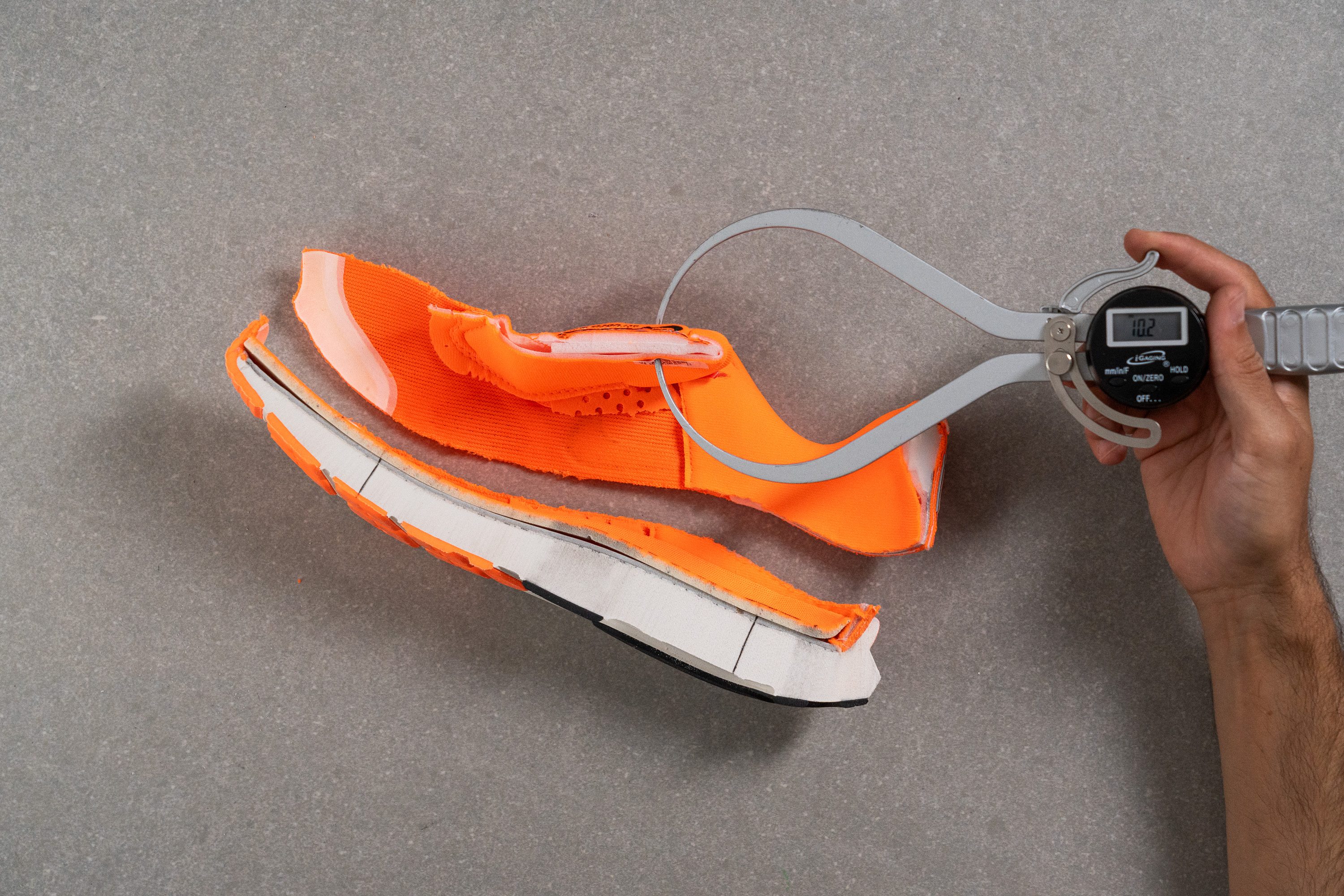
| Structure 26 | 10.2 mm |
| Average | 5.8 mm |
Tongue: gusset type
The tongue is not gusseted, which is a slight letdown. It’s not a deal-breaker for a mid-priced shoe, but we think Nike could have included it without much trouble.
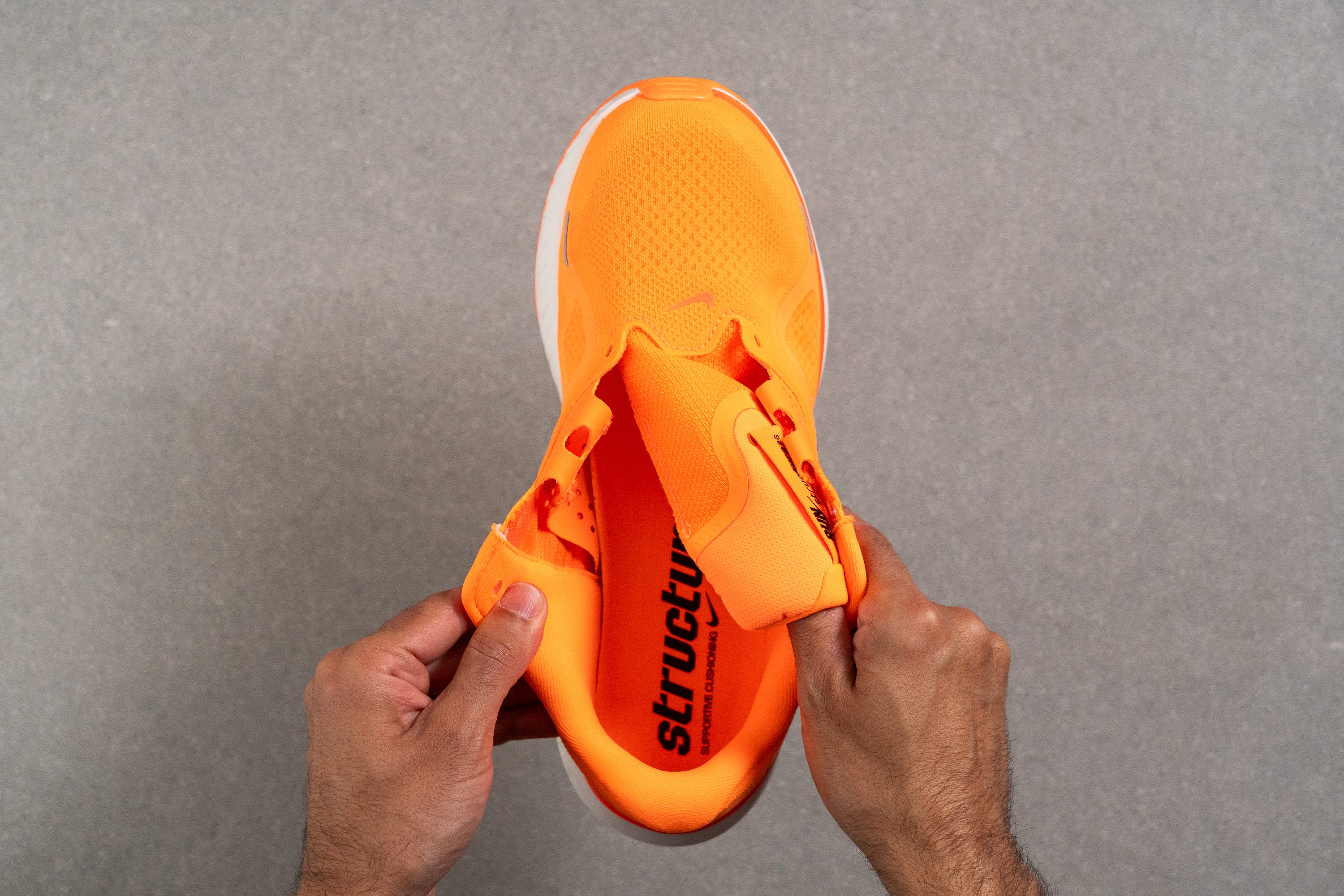
| Structure 26 | None |
Price
The Nike Structure 26 comes with a small price increase, likely due to the switch to ReactX foam, which costs more than the Cushlon 3.0 used in its predecessor. However, it remains reasonably priced compared to its peers, and we believe the Structure is unlikely to face a significant price hike in the coming years.
| Structure 26 | $145 |
| Average | $152 |
Heel tab
The Nike Structure 26 does not feature a finger-loop heel tab. Instead, it uses a reguar heel collar with light padding that curves outward to reduce pressure on the Achilles and make entry easier. We also liked the reinforced overlay that improves durability and adds a nice touch.
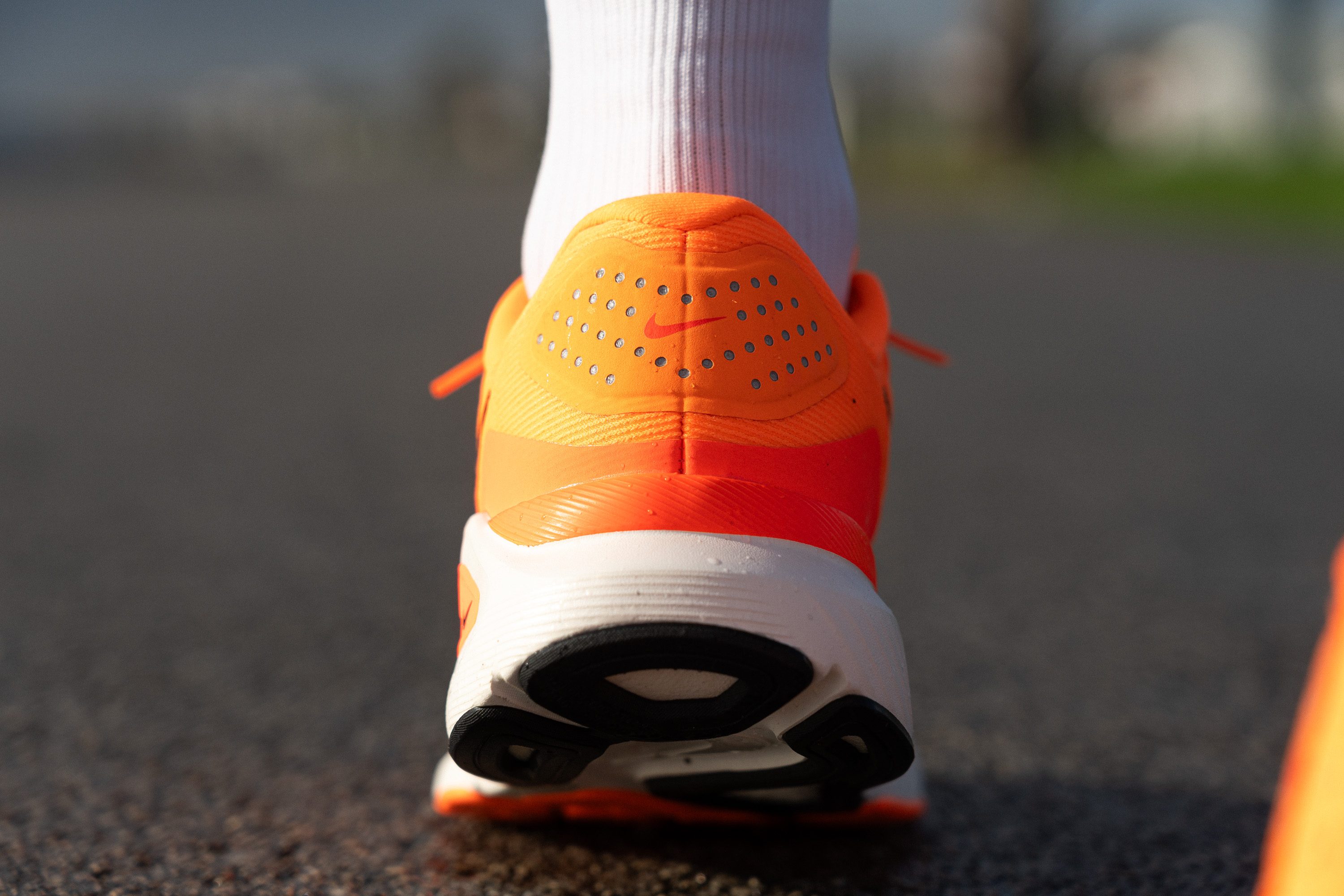
| Structure 26 | None |

